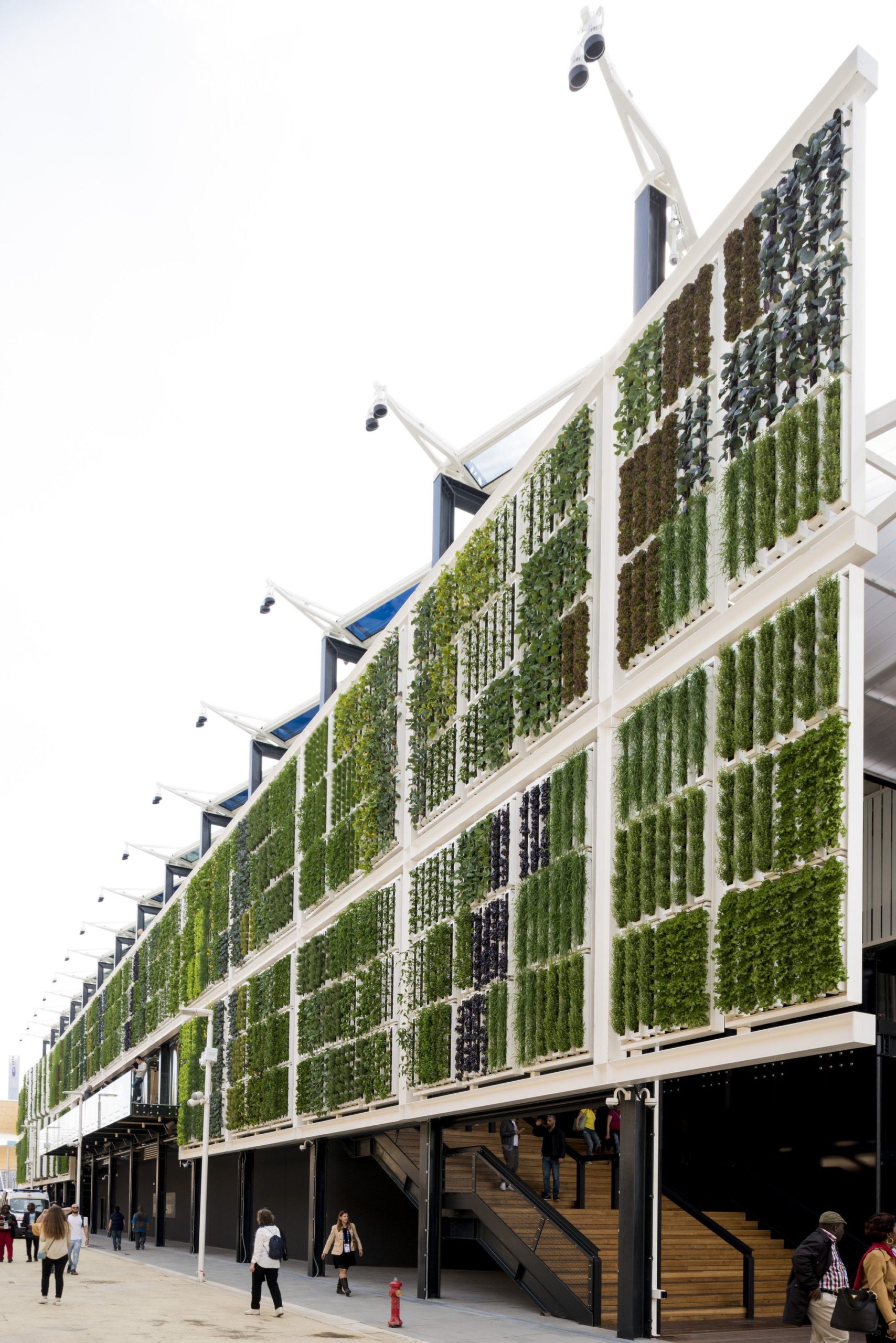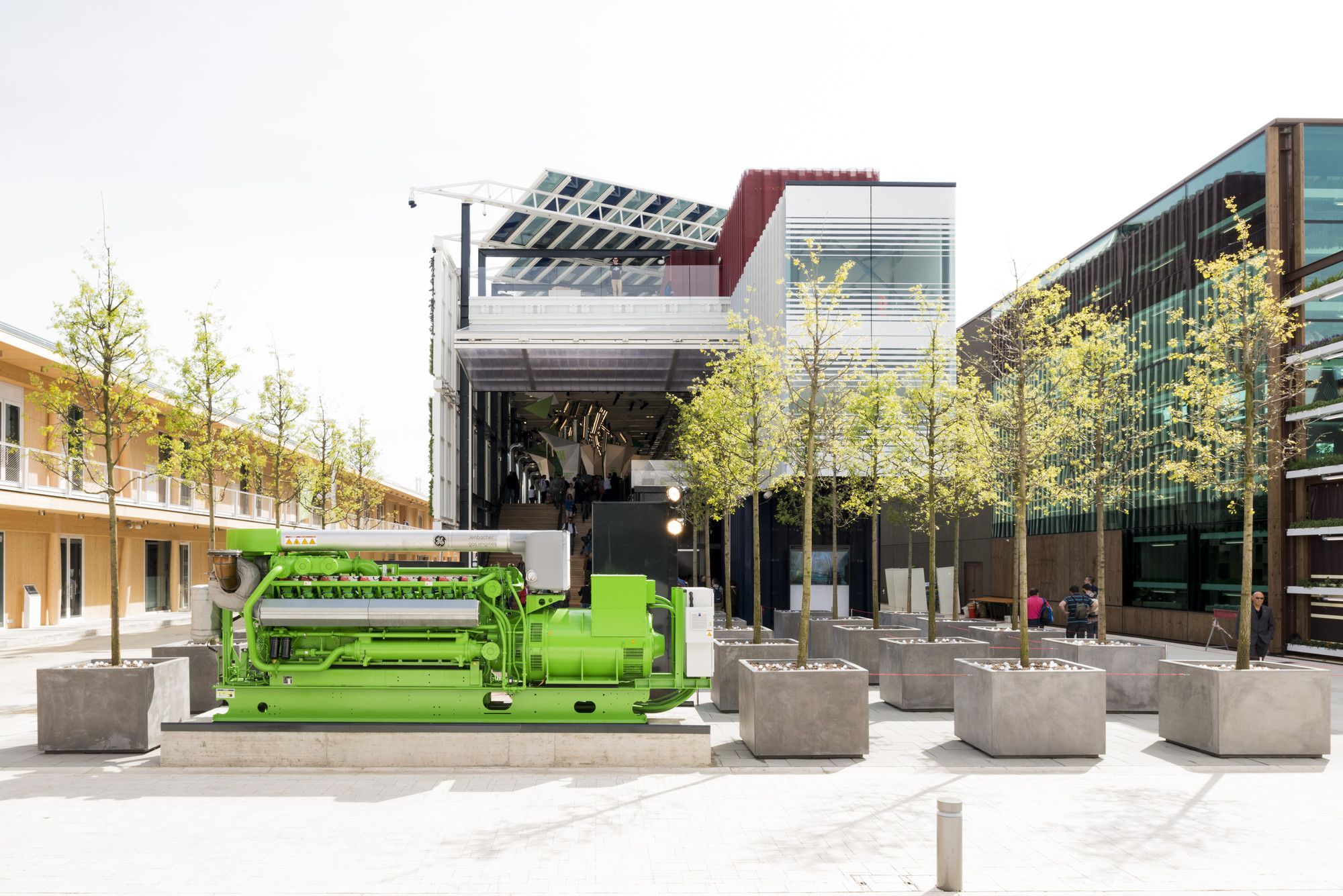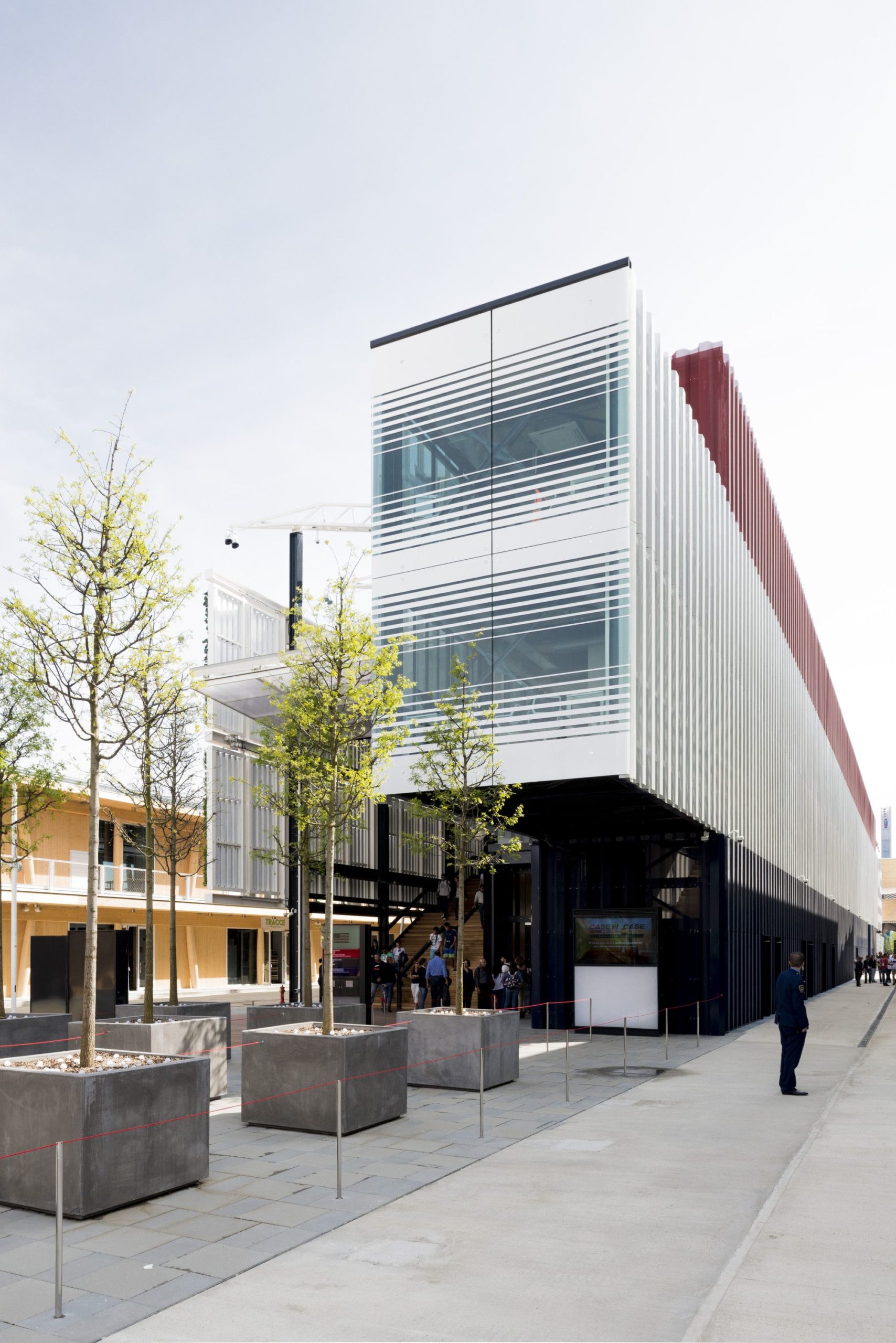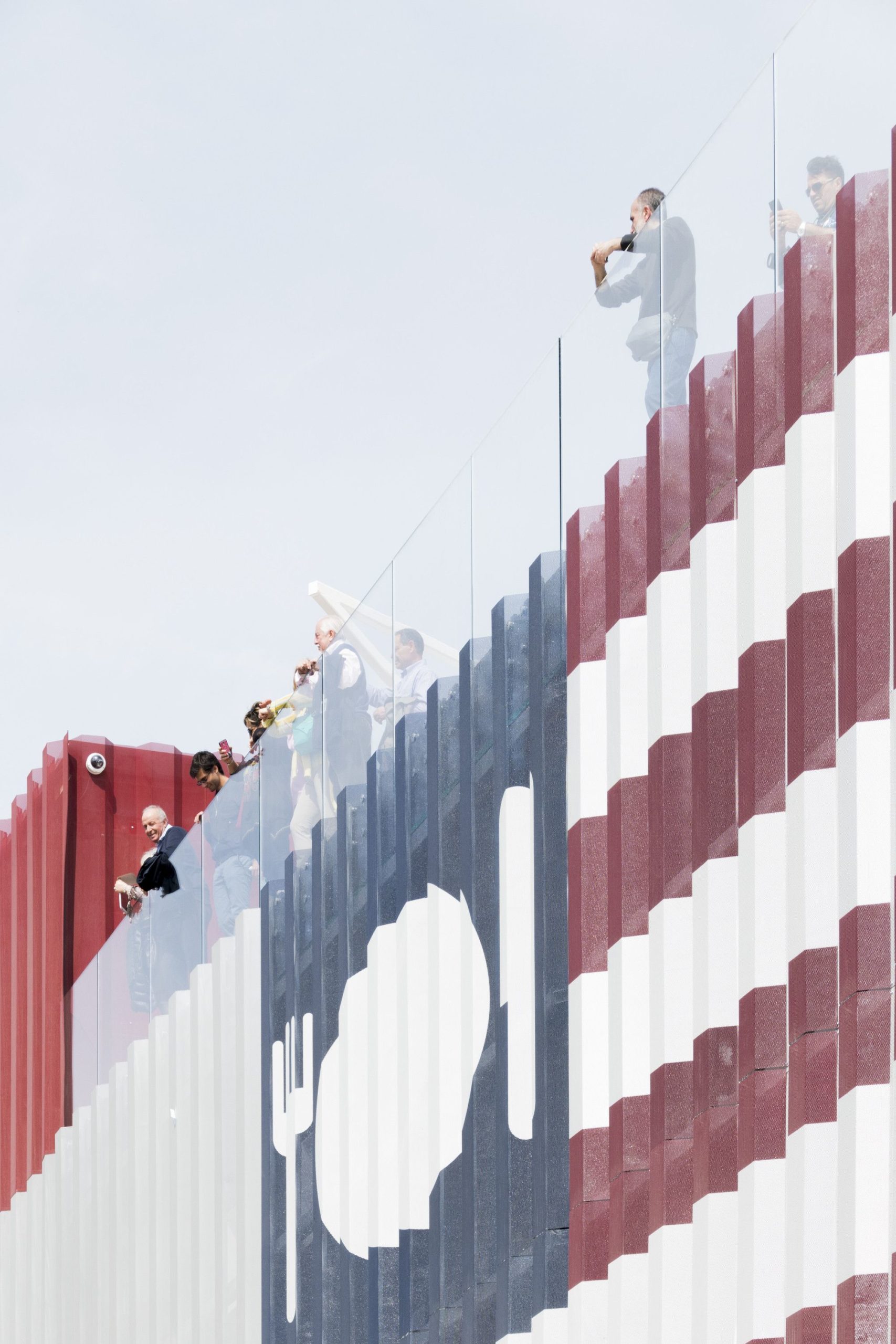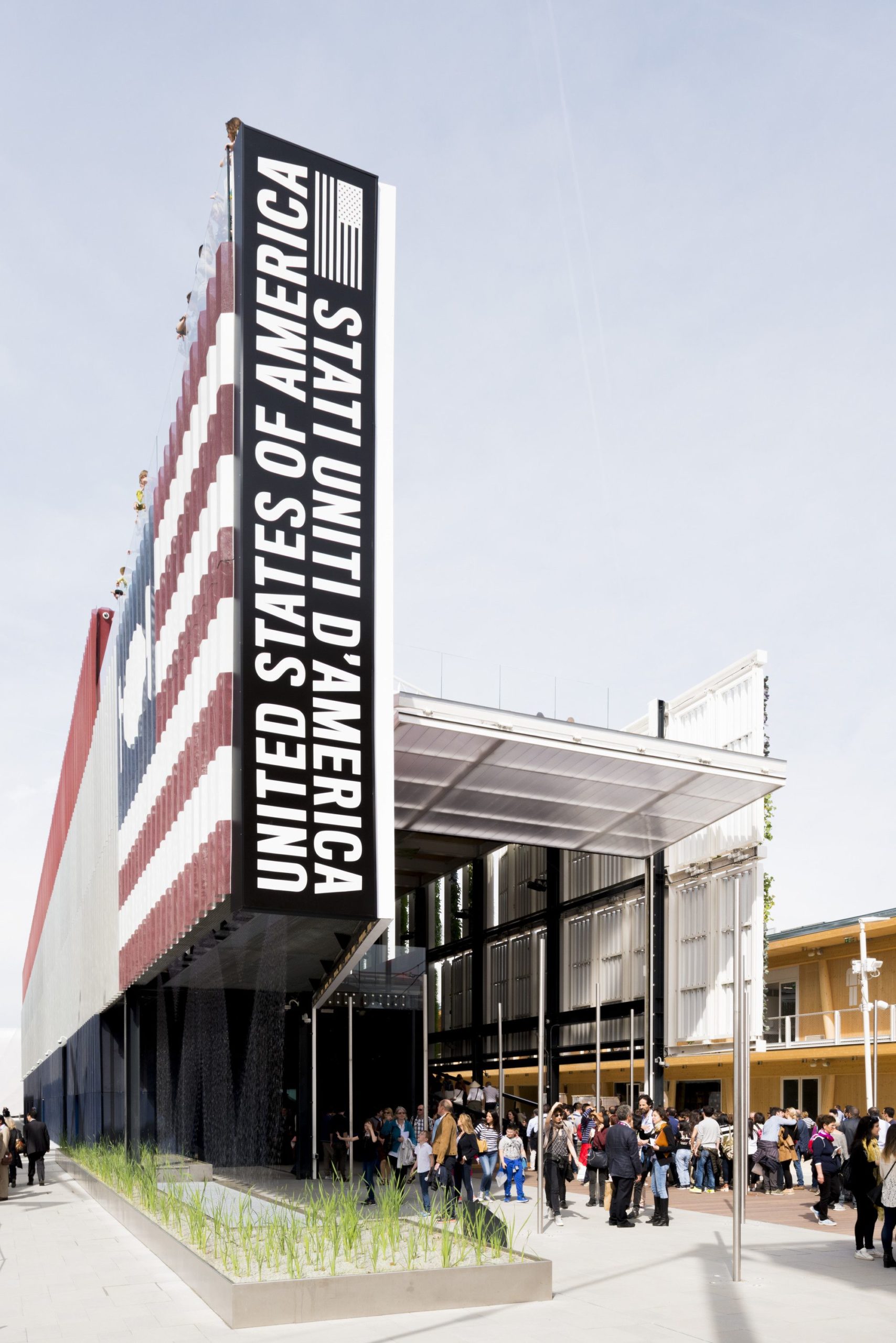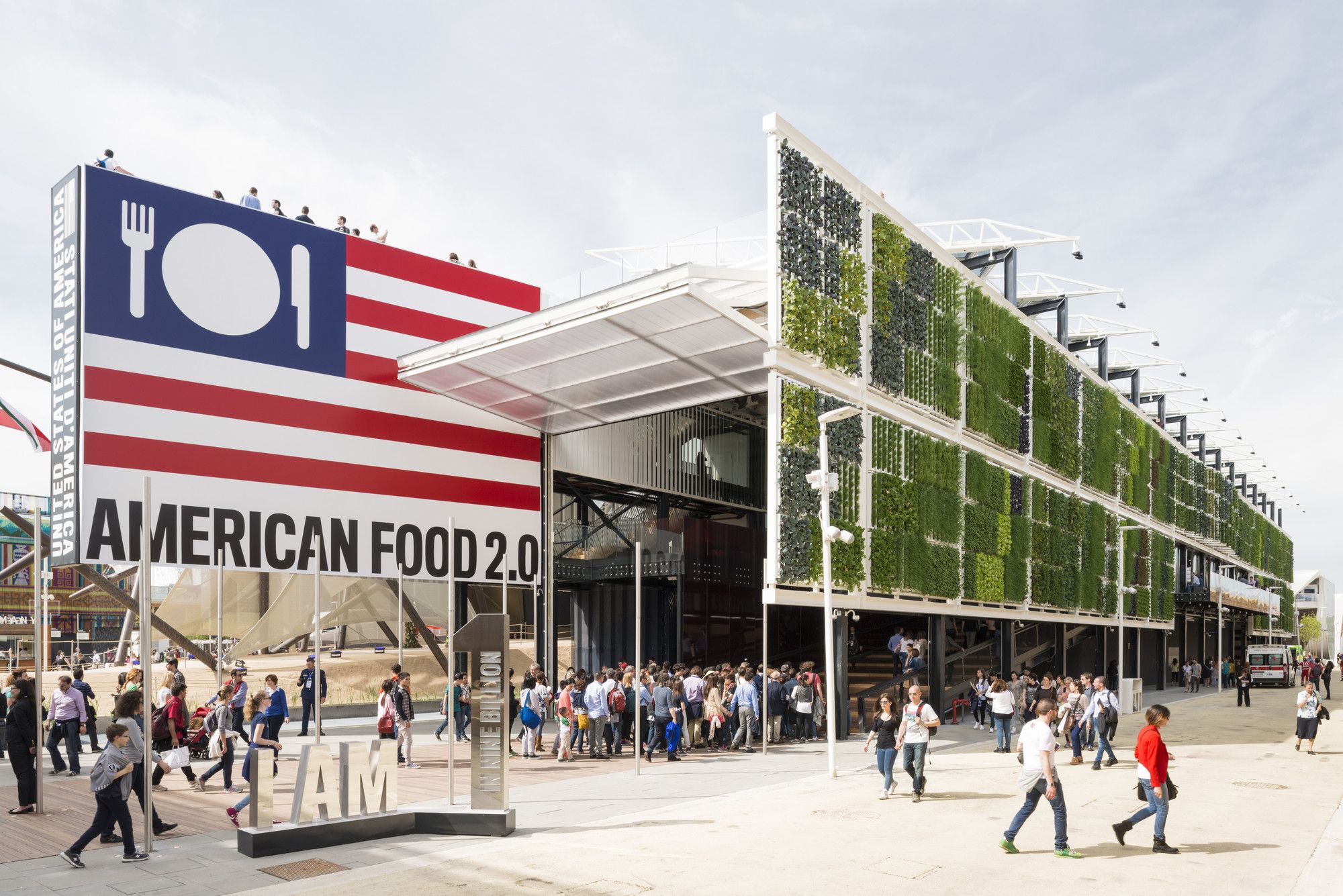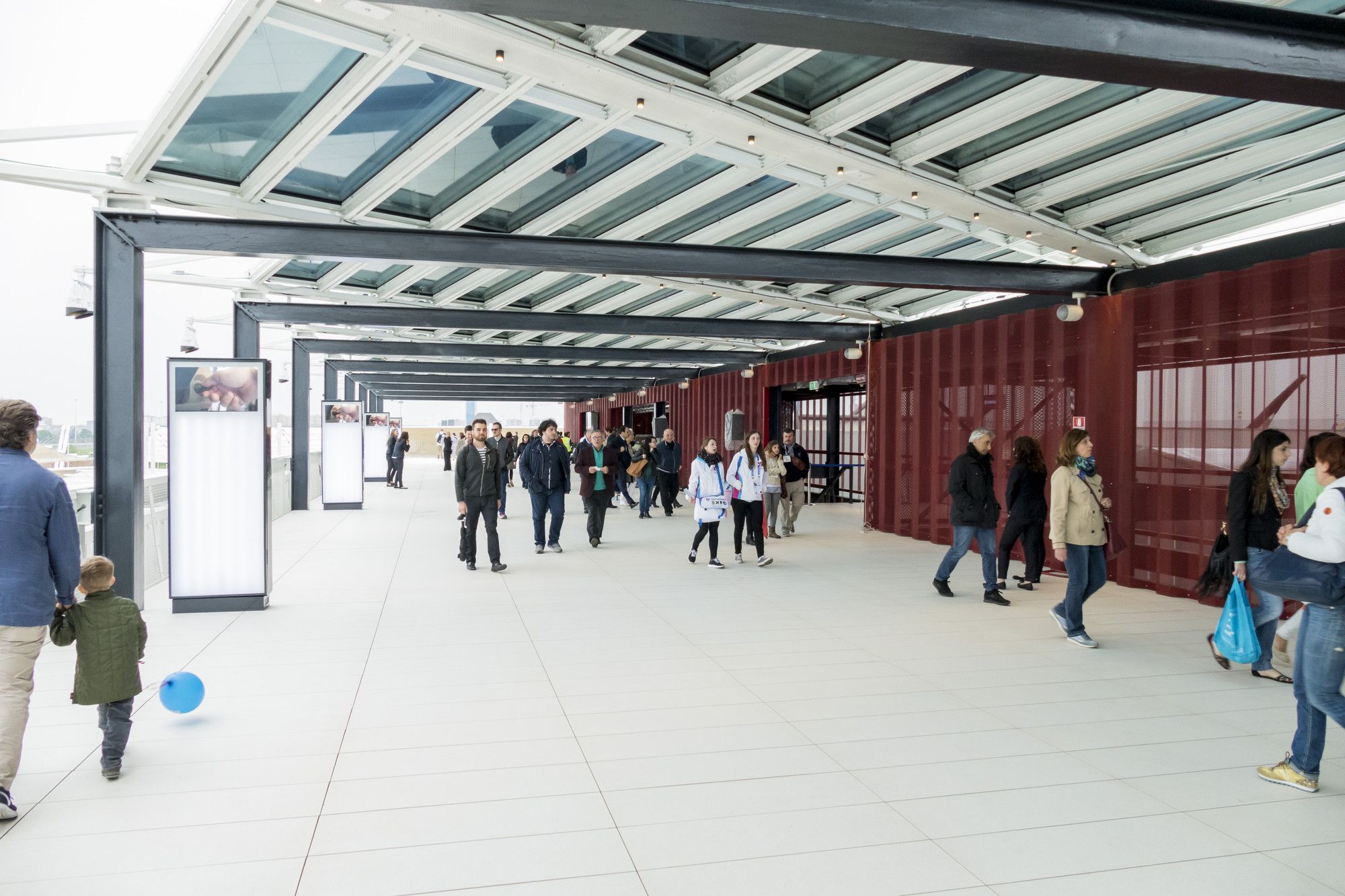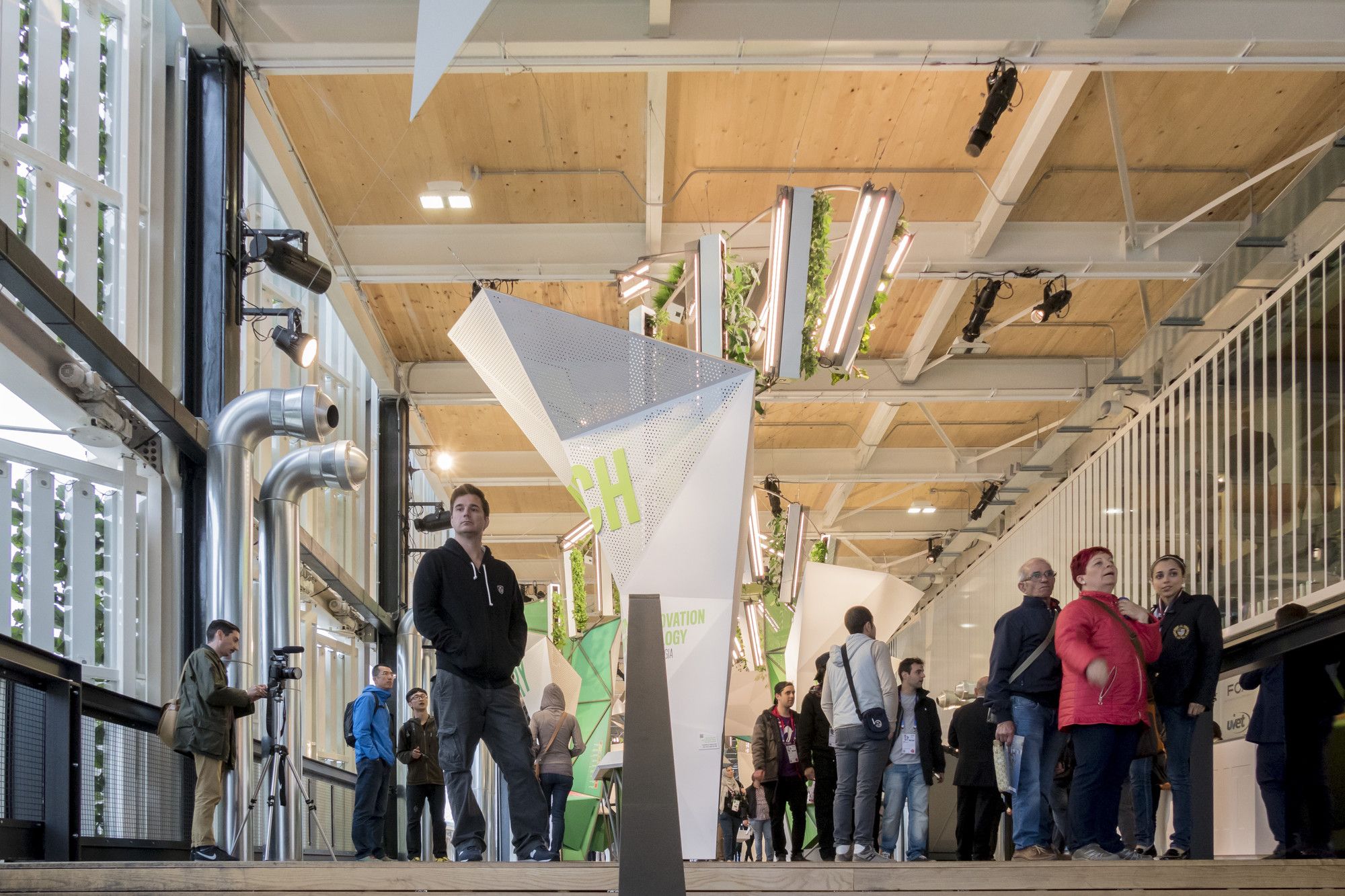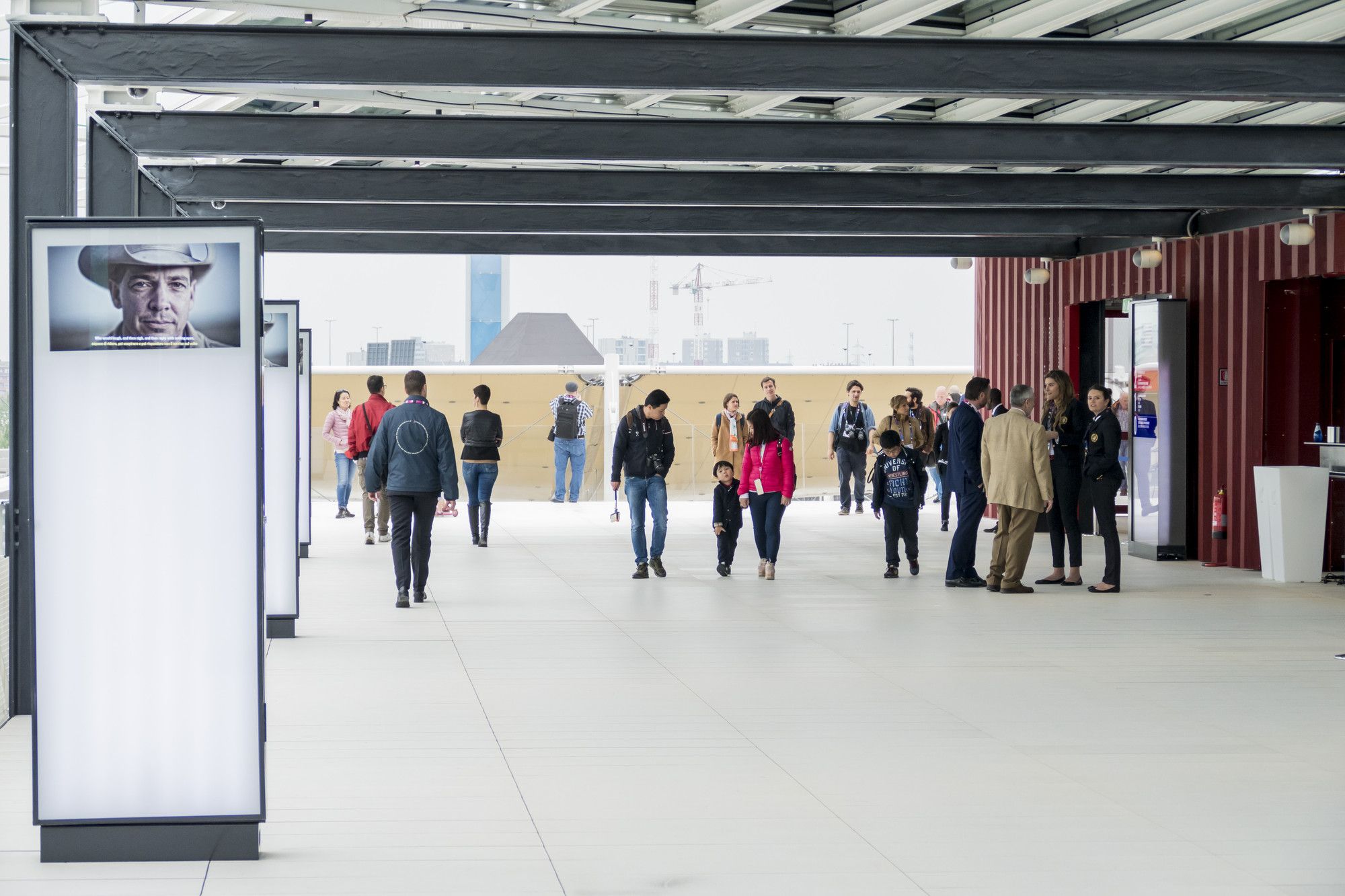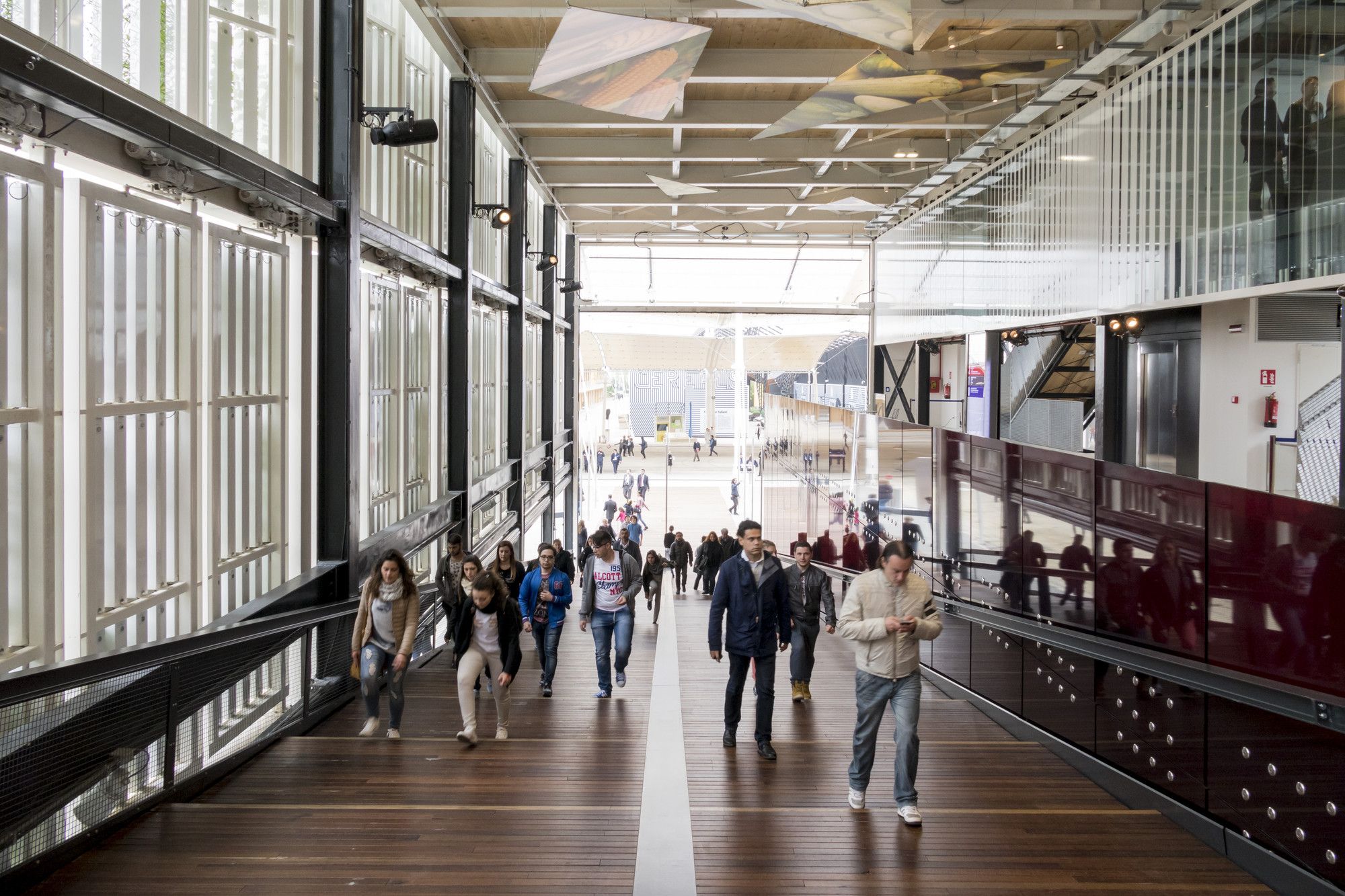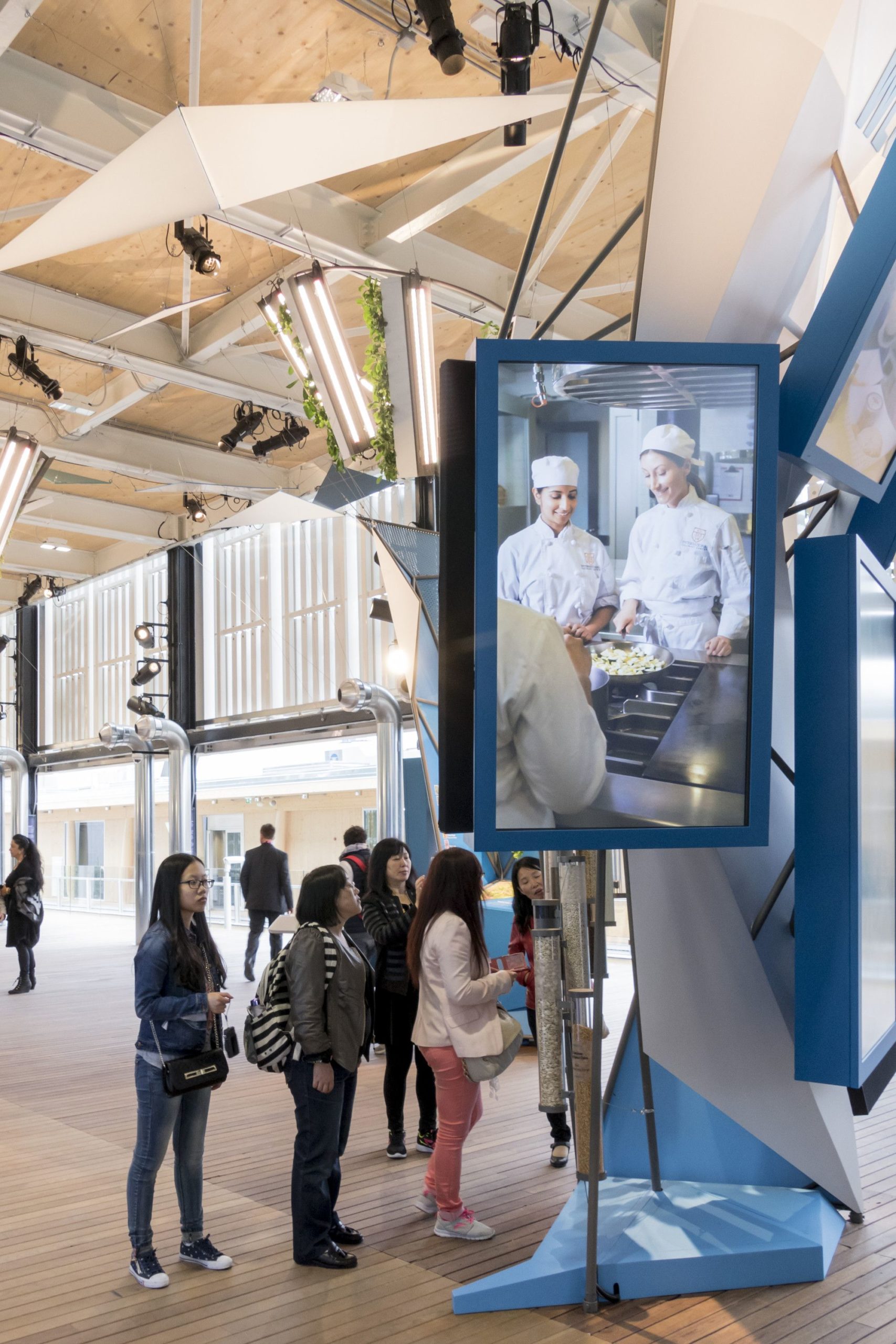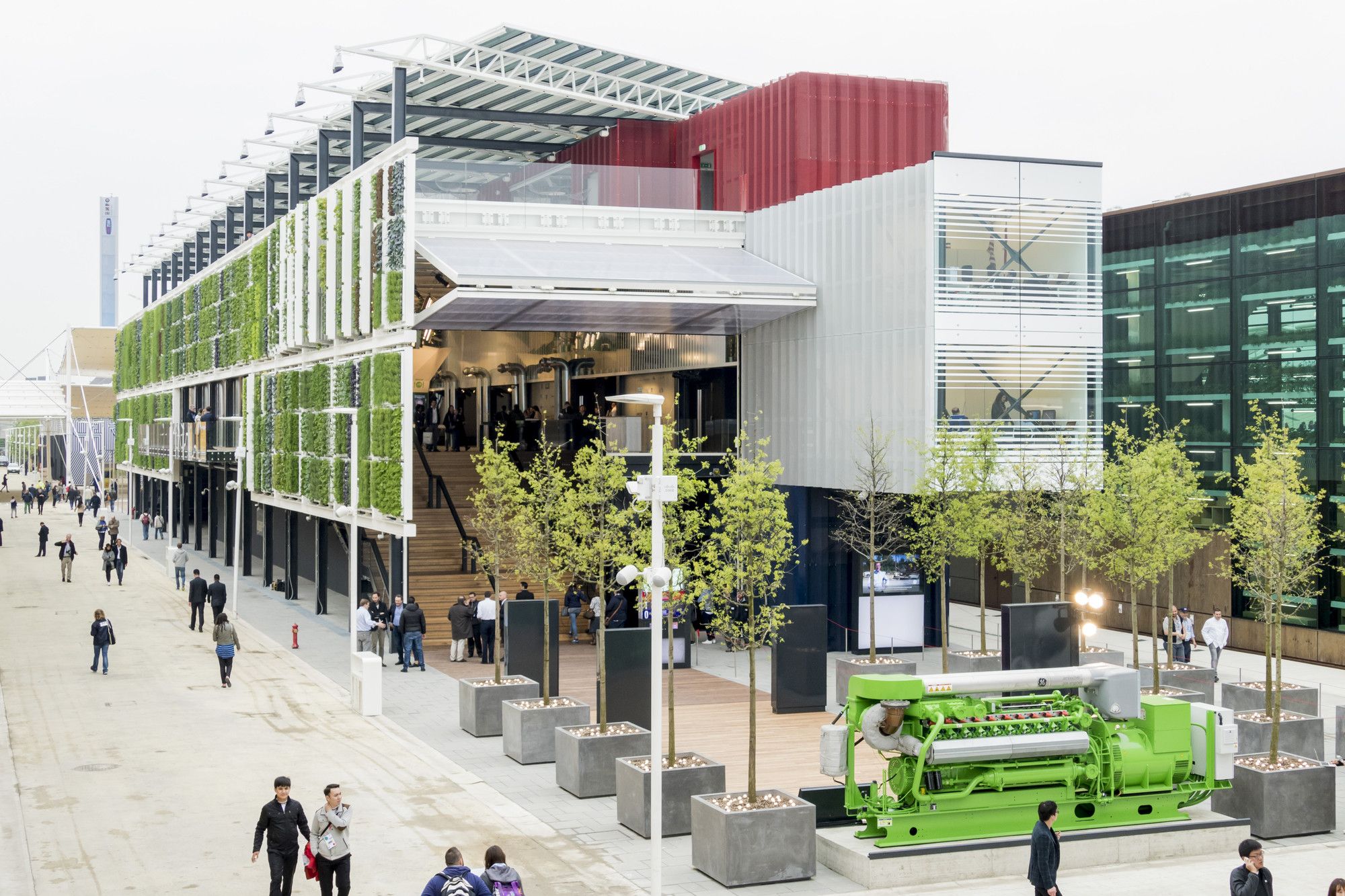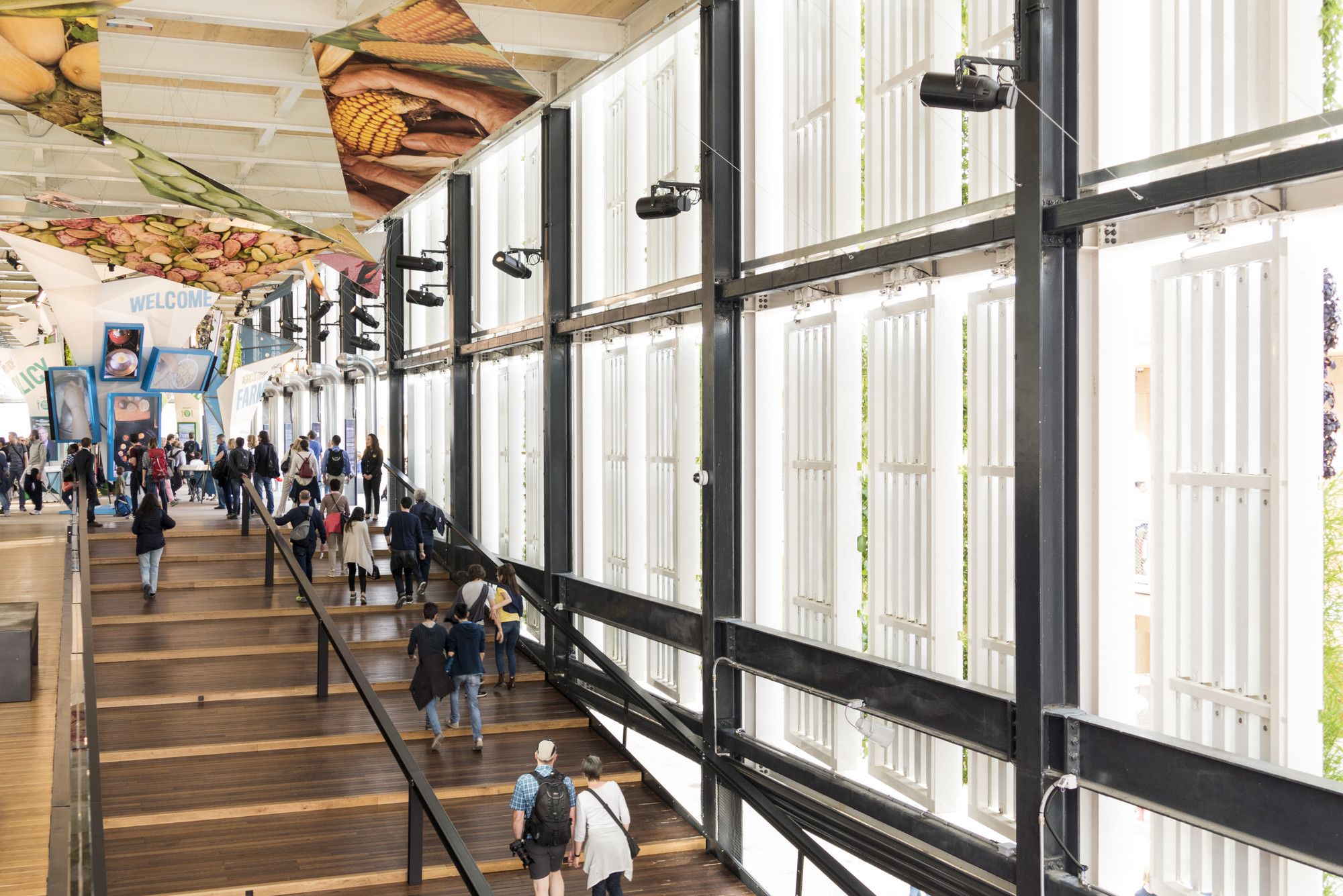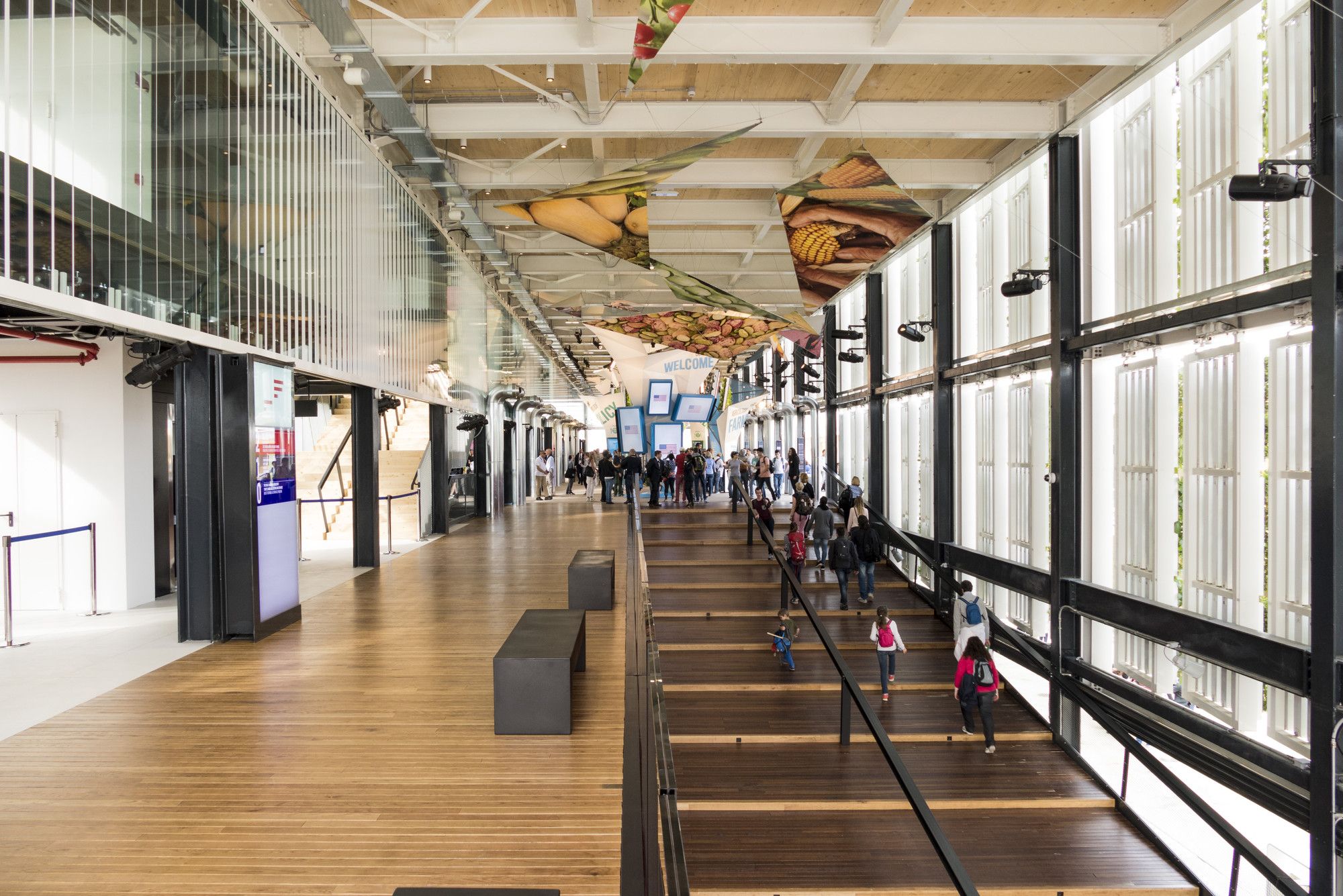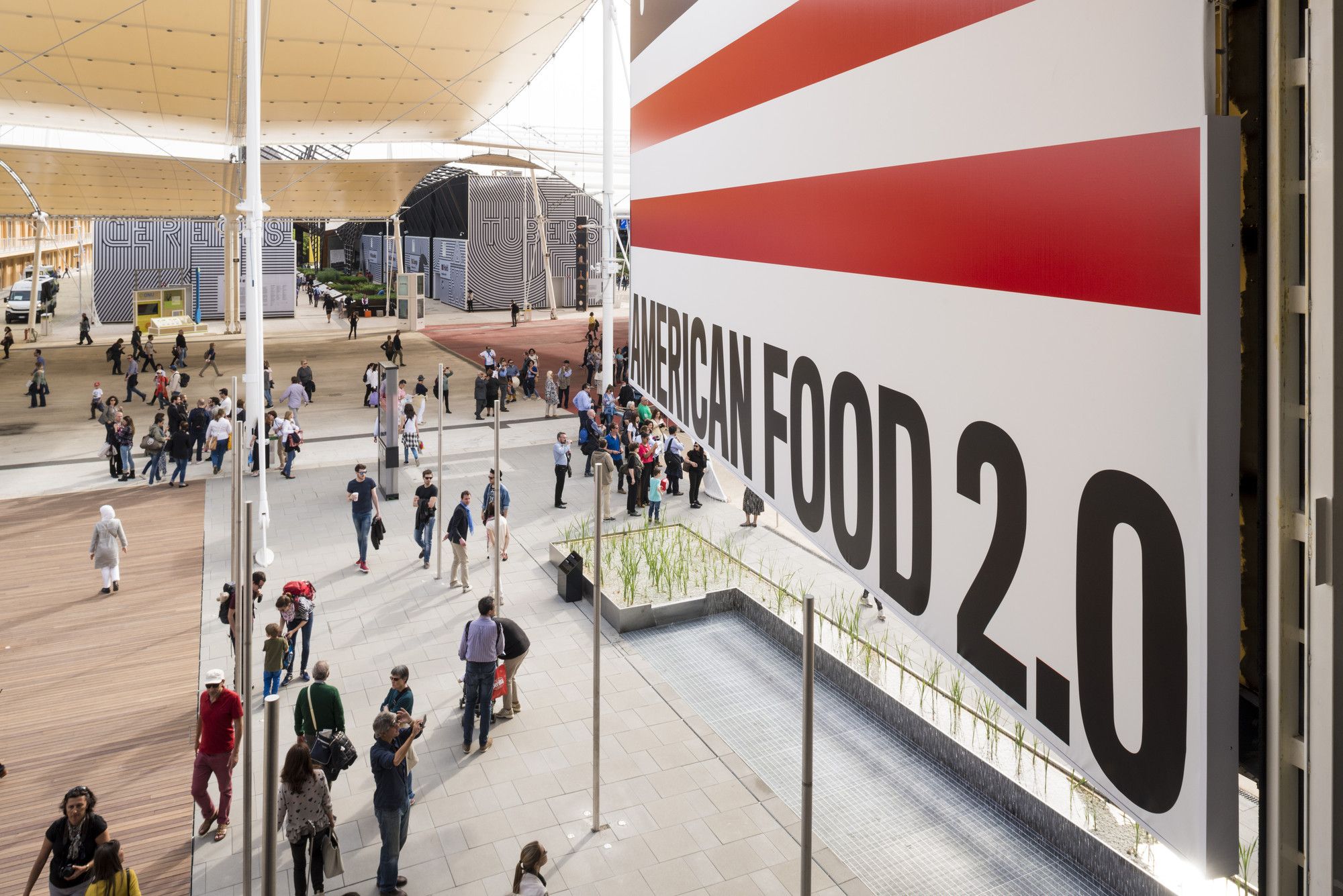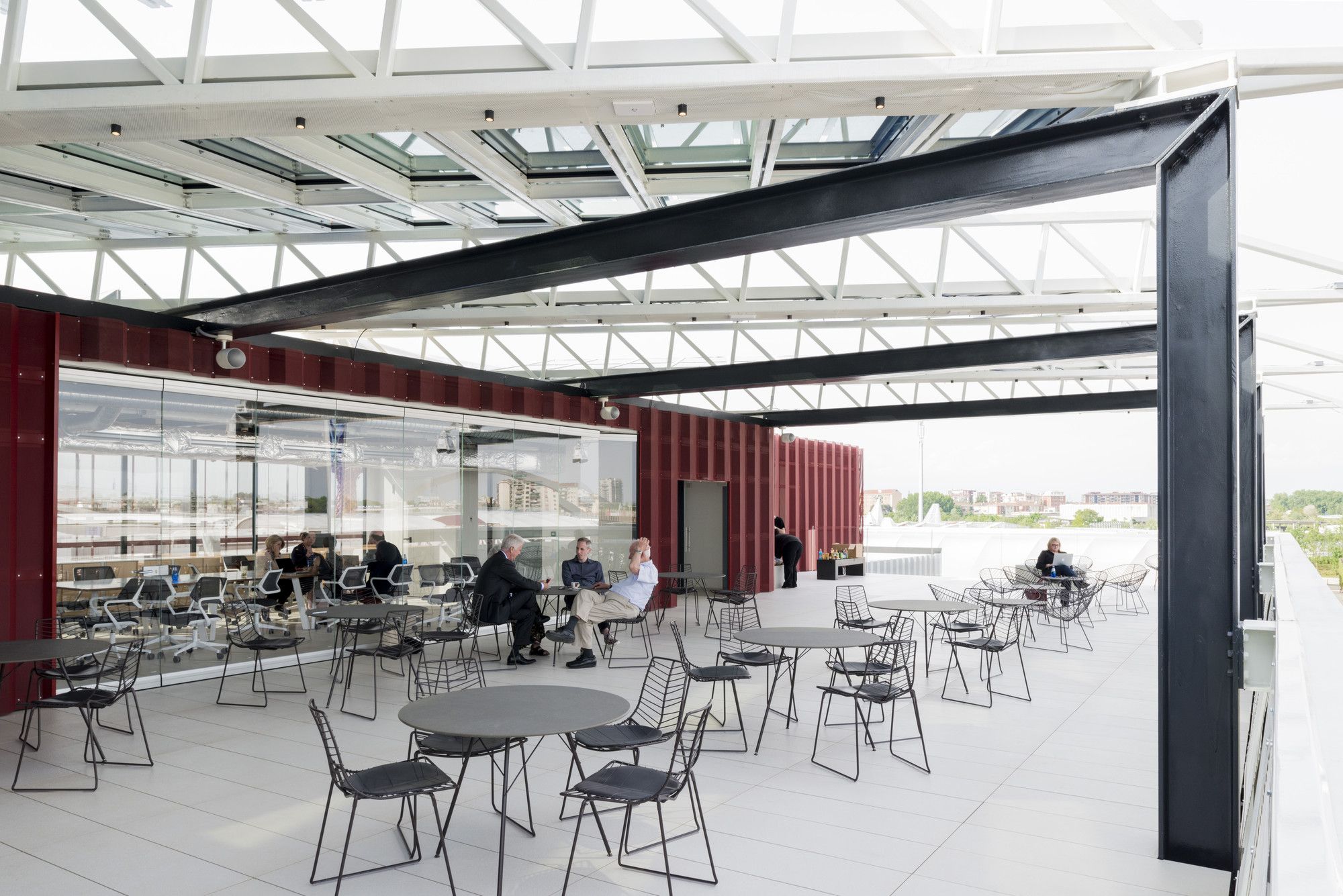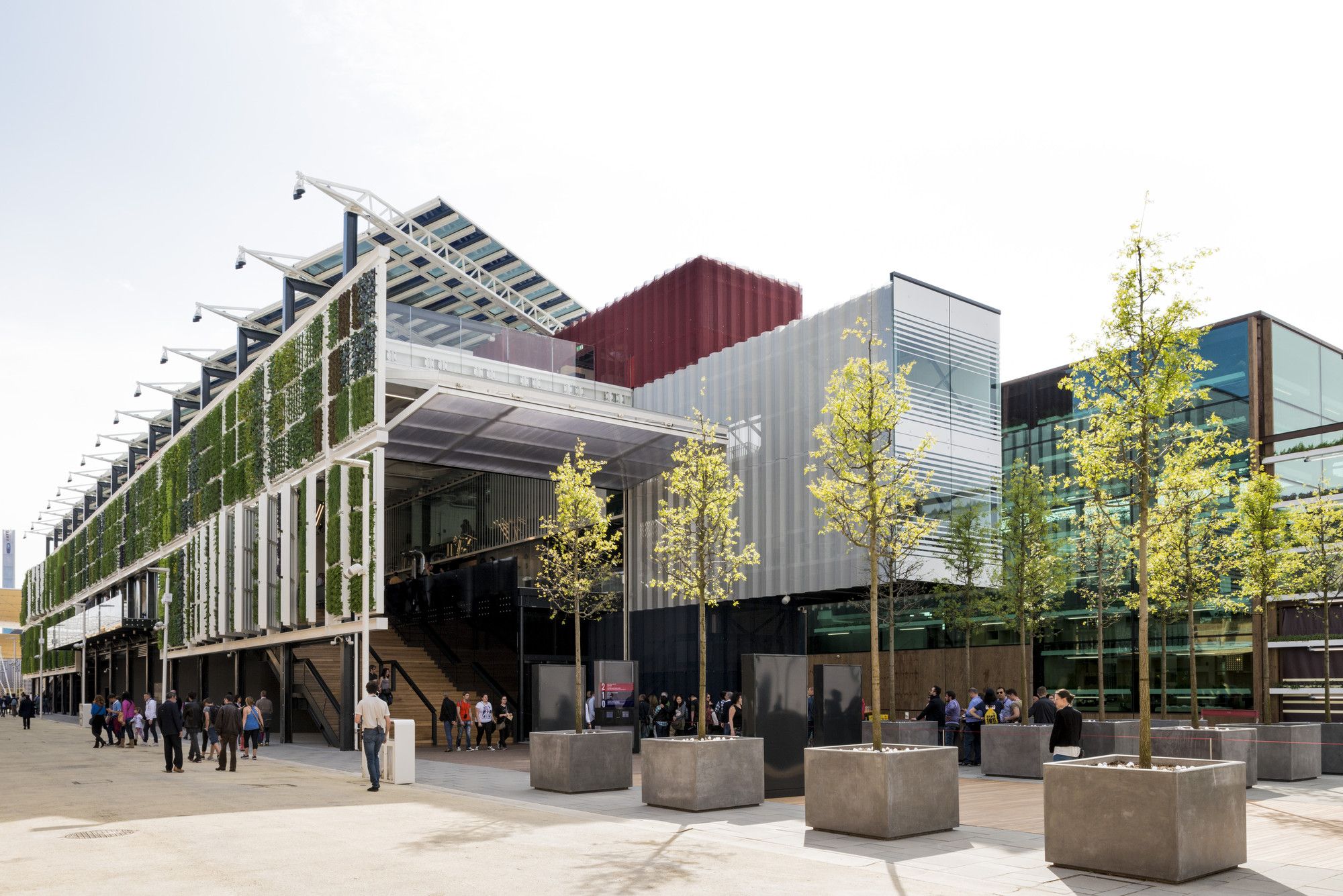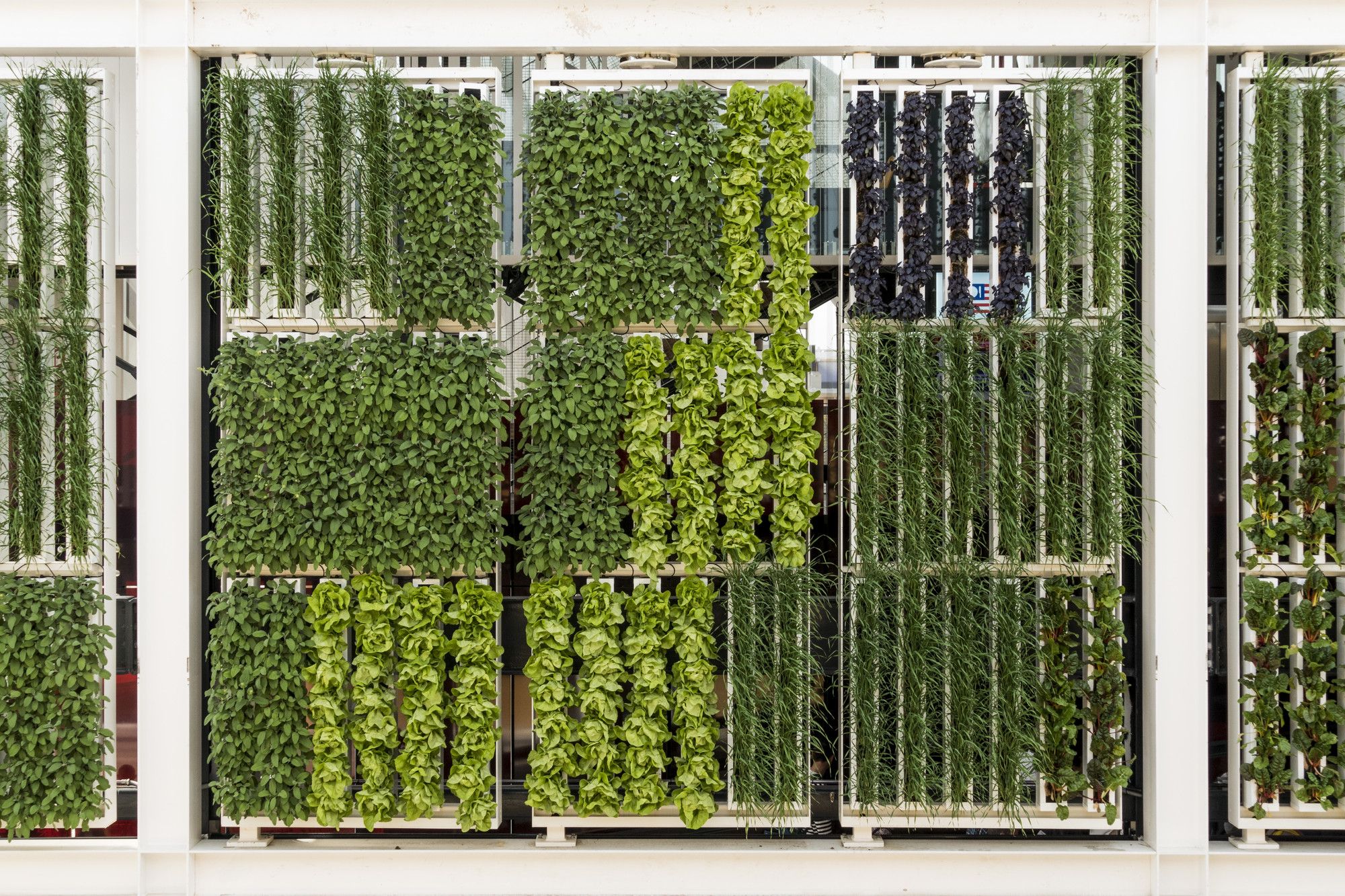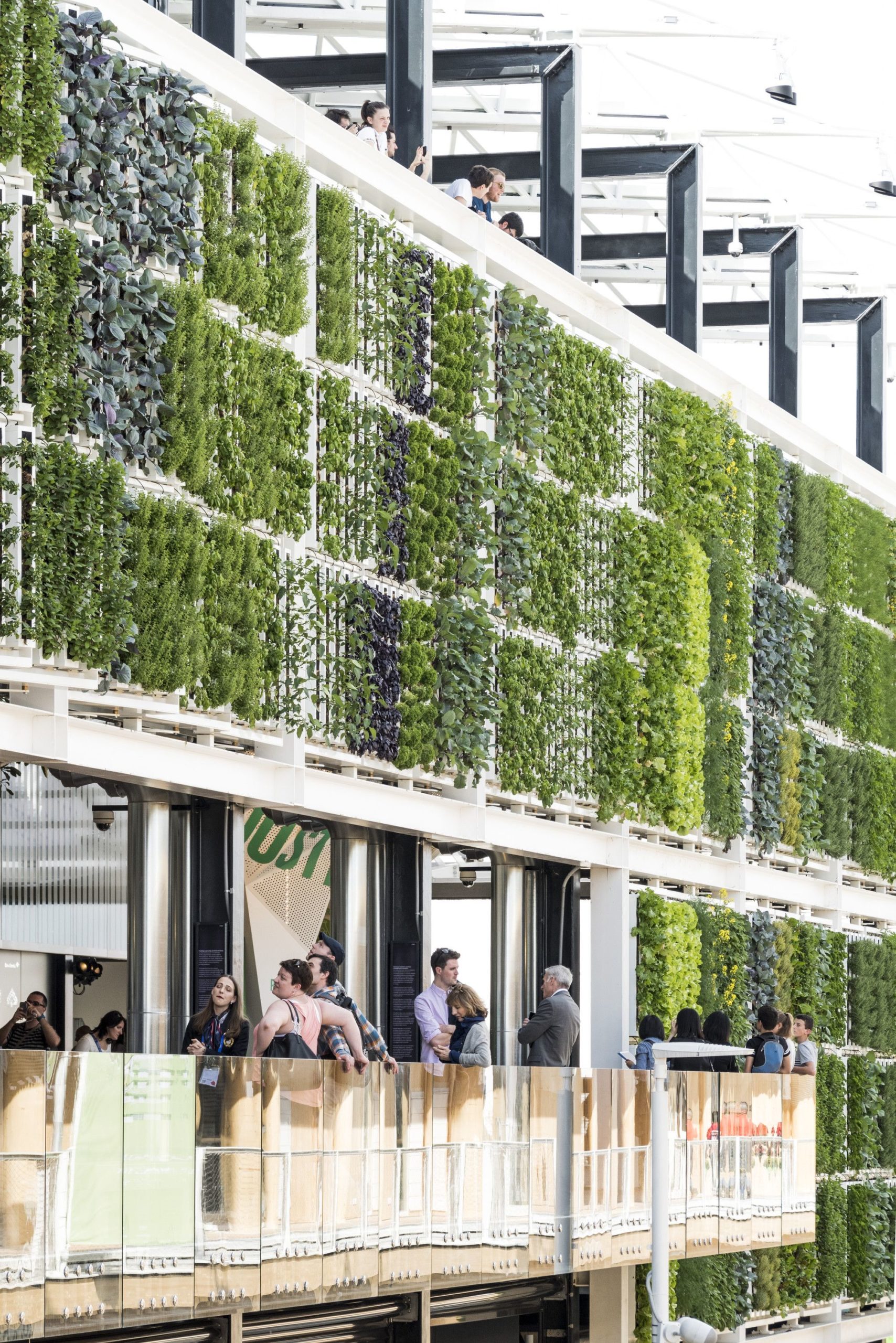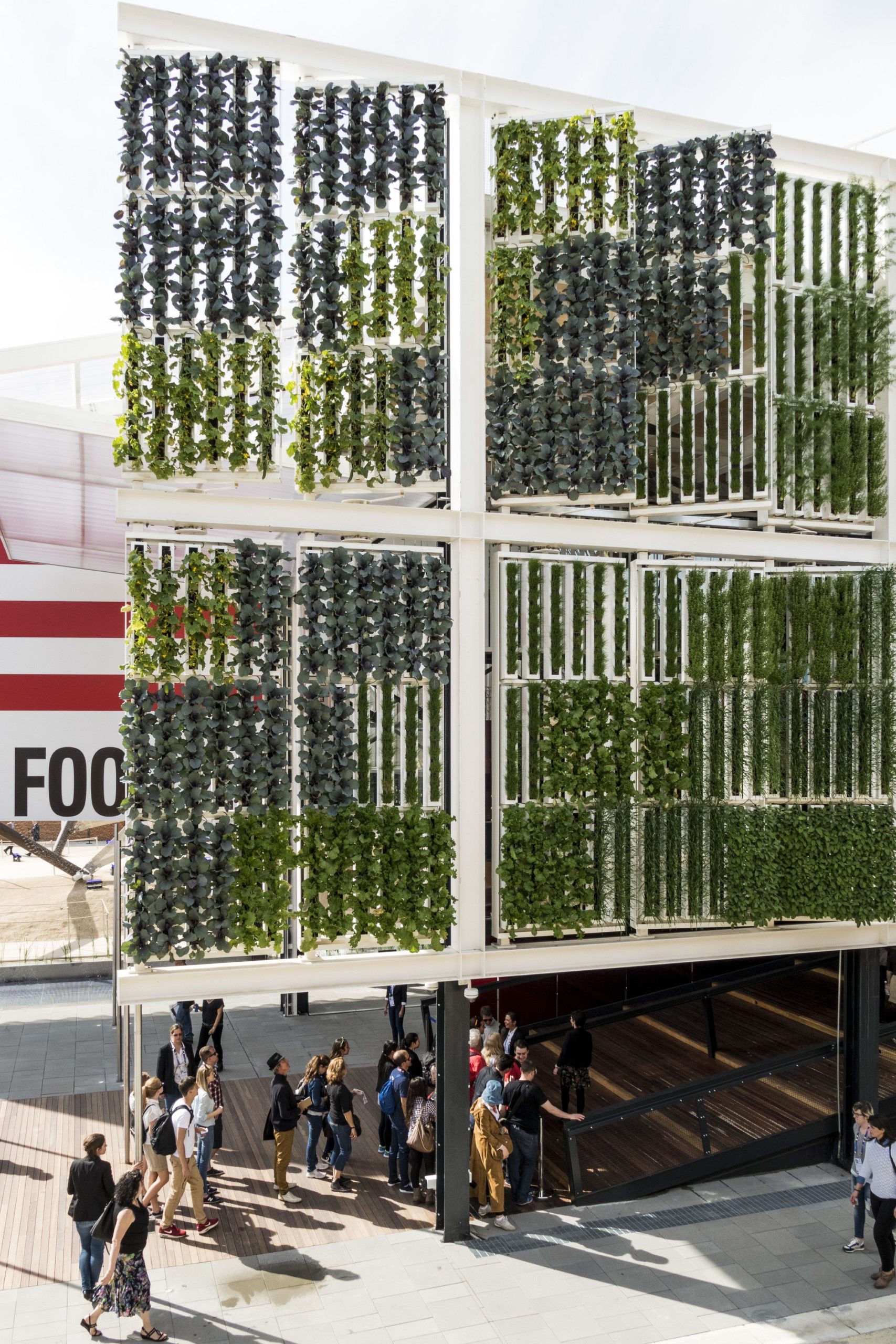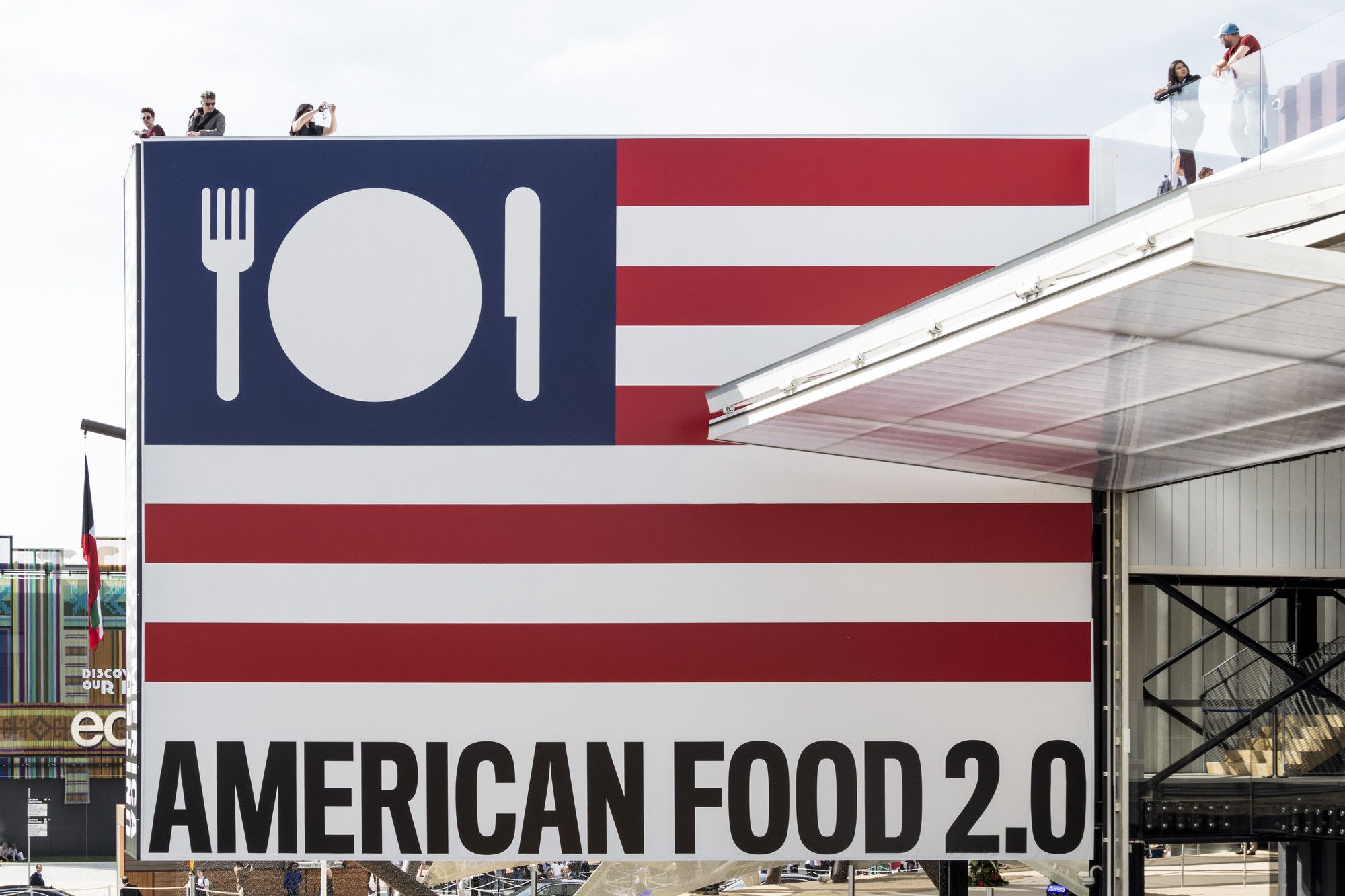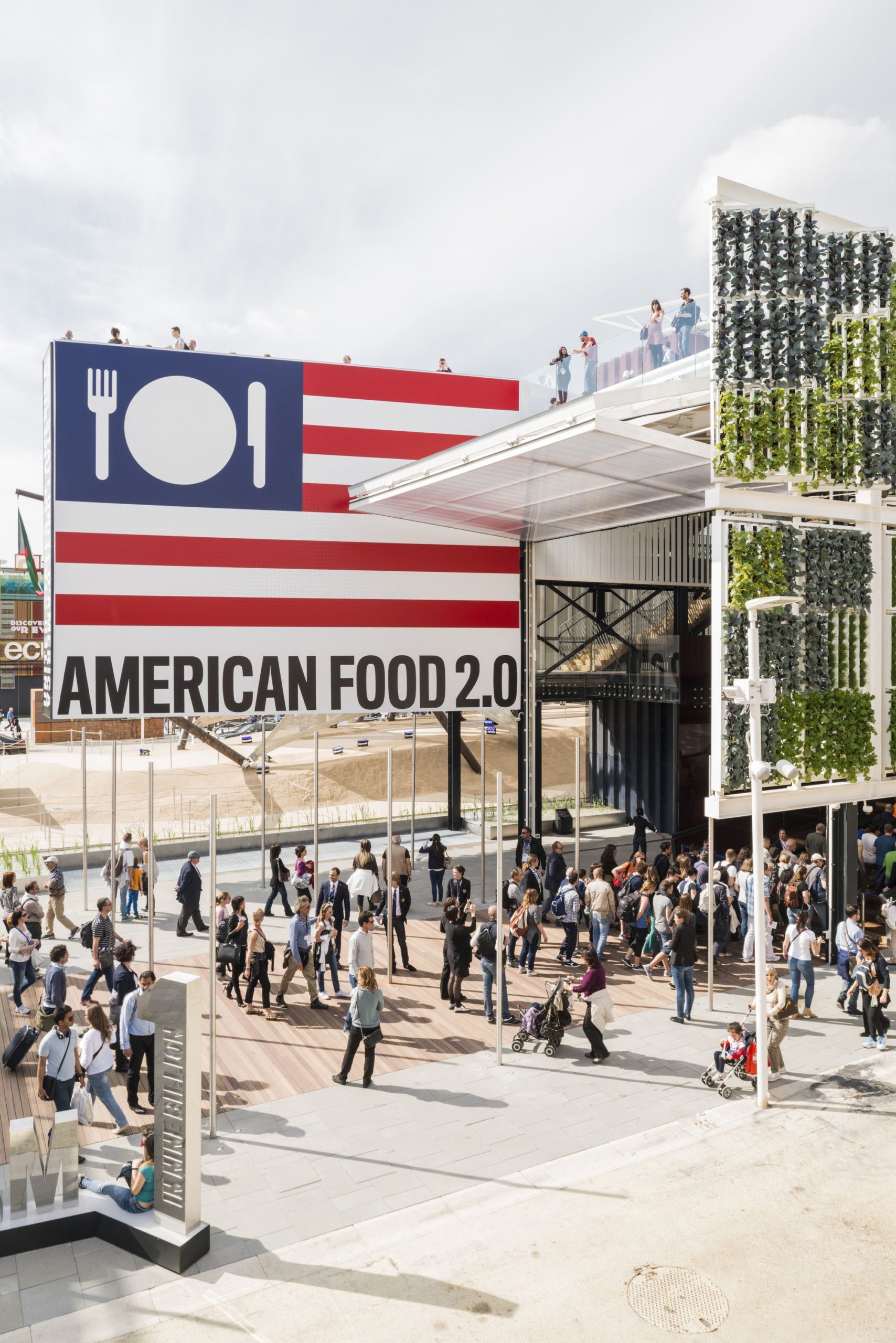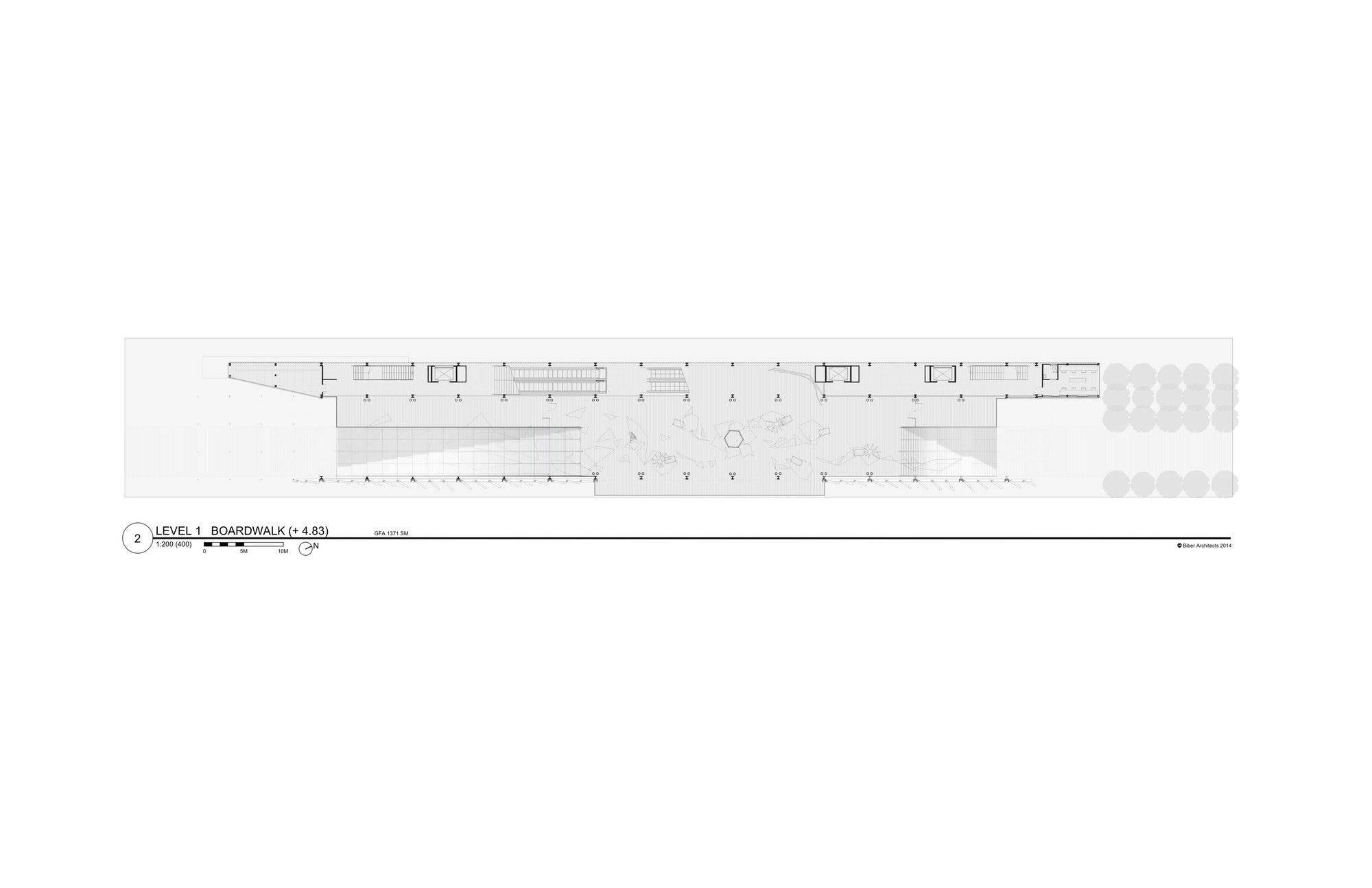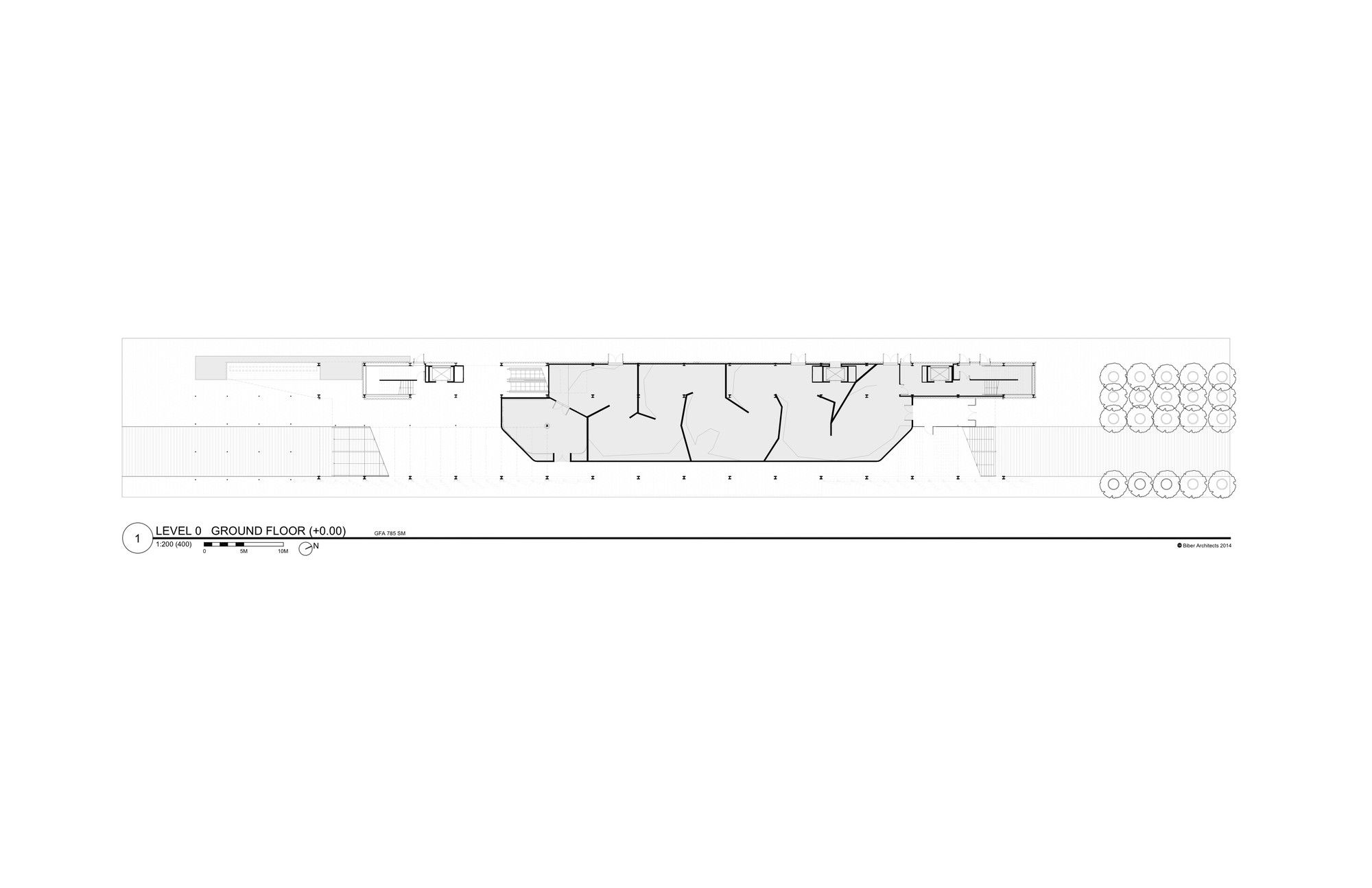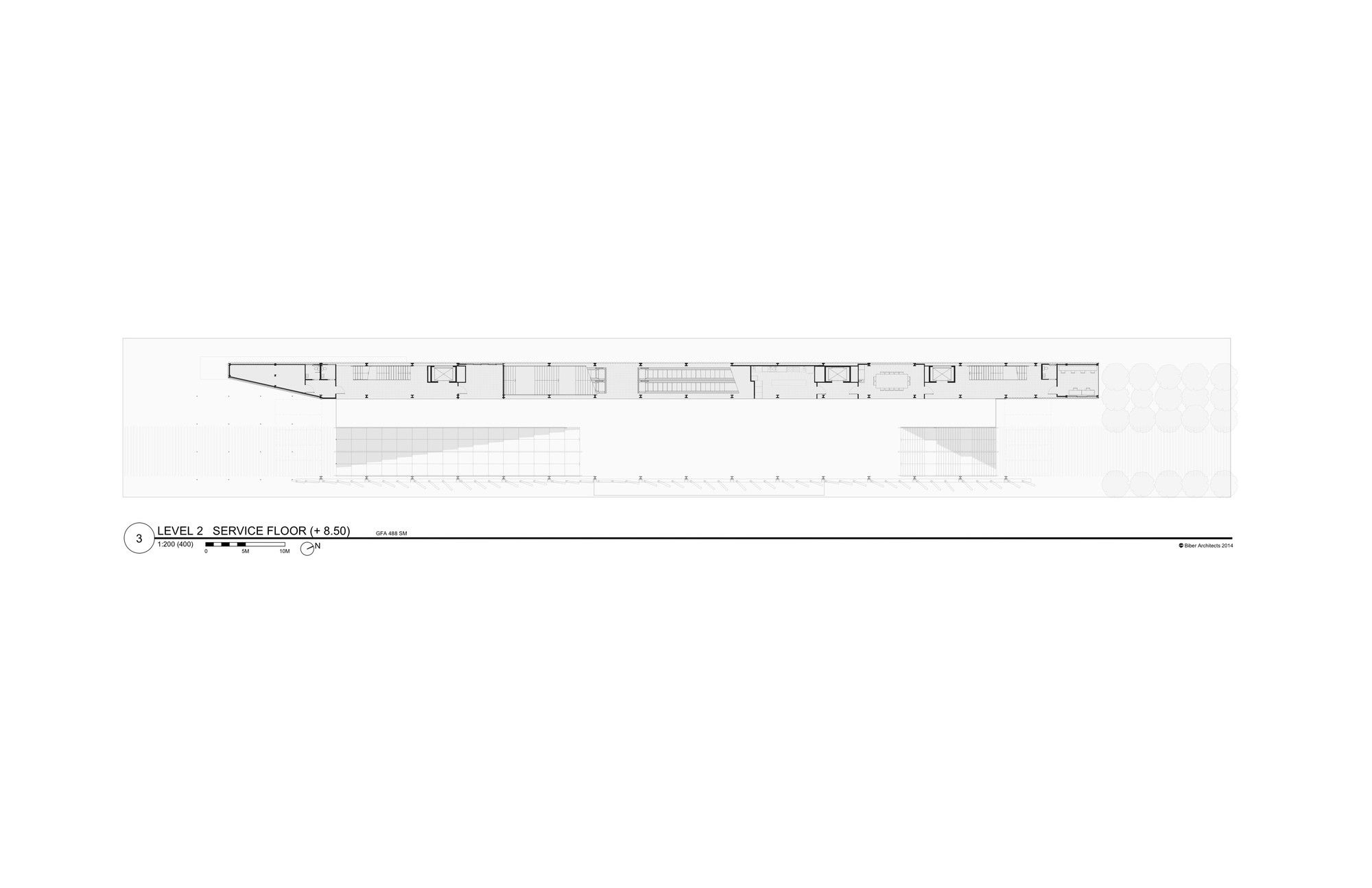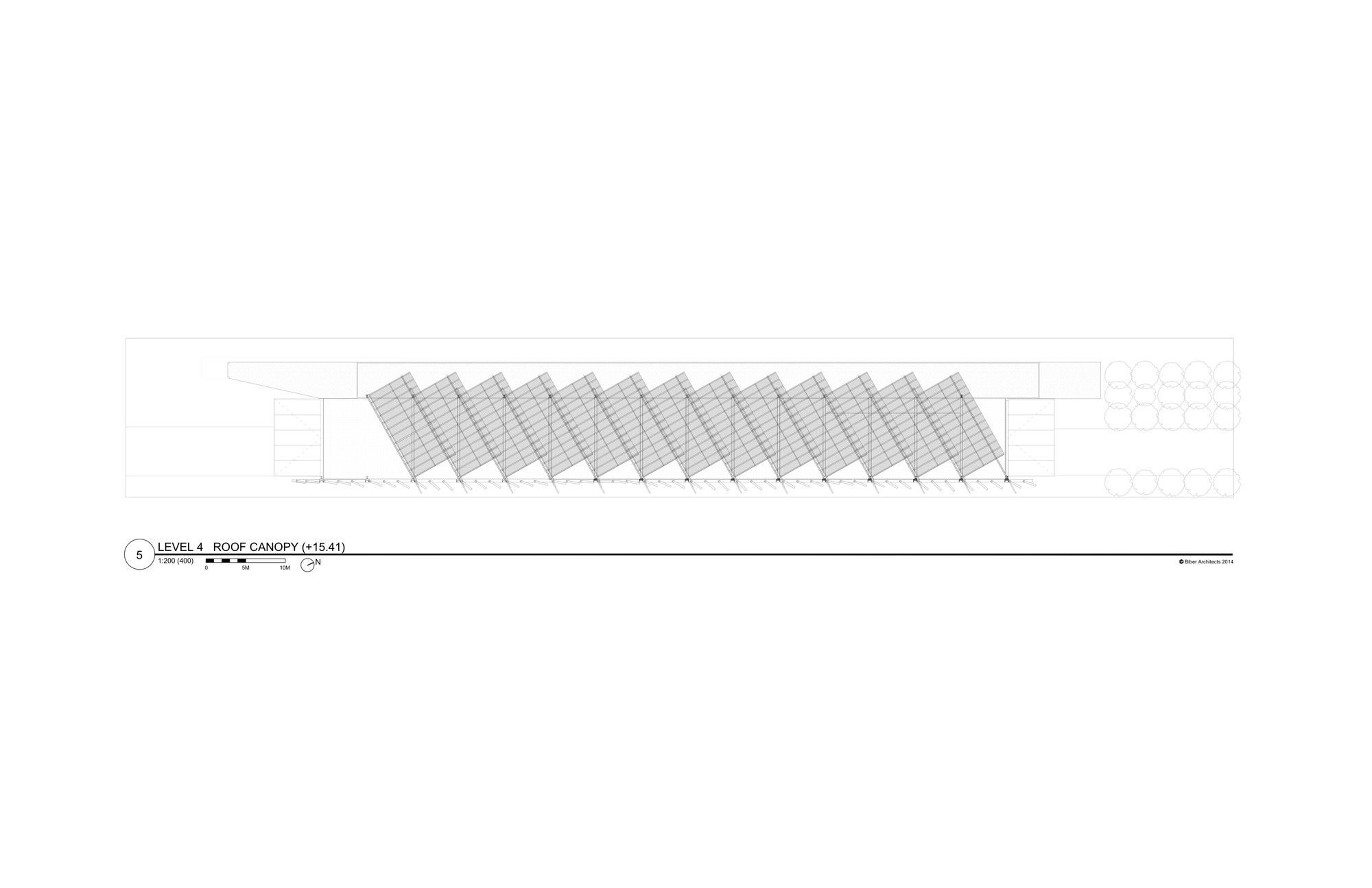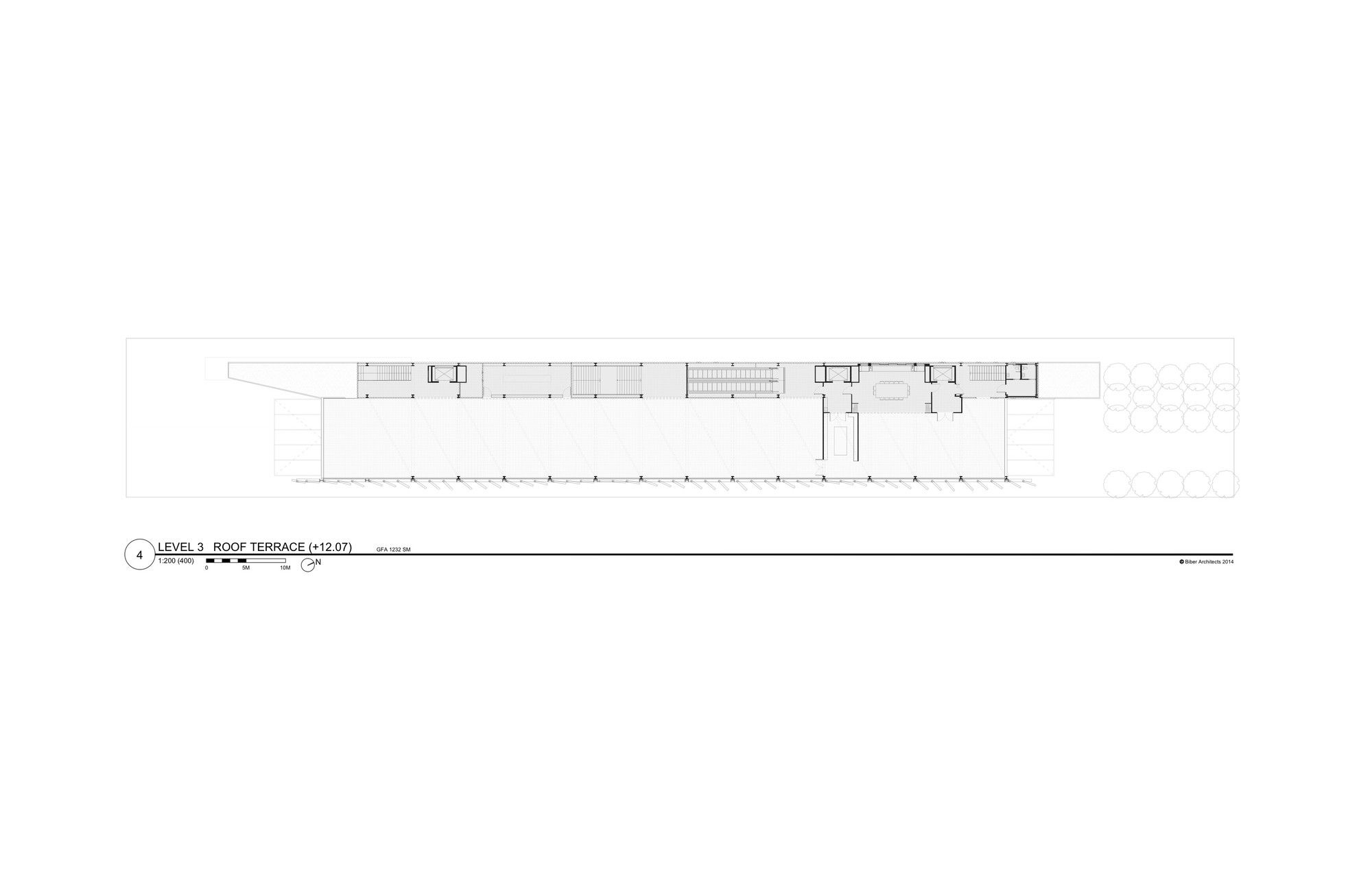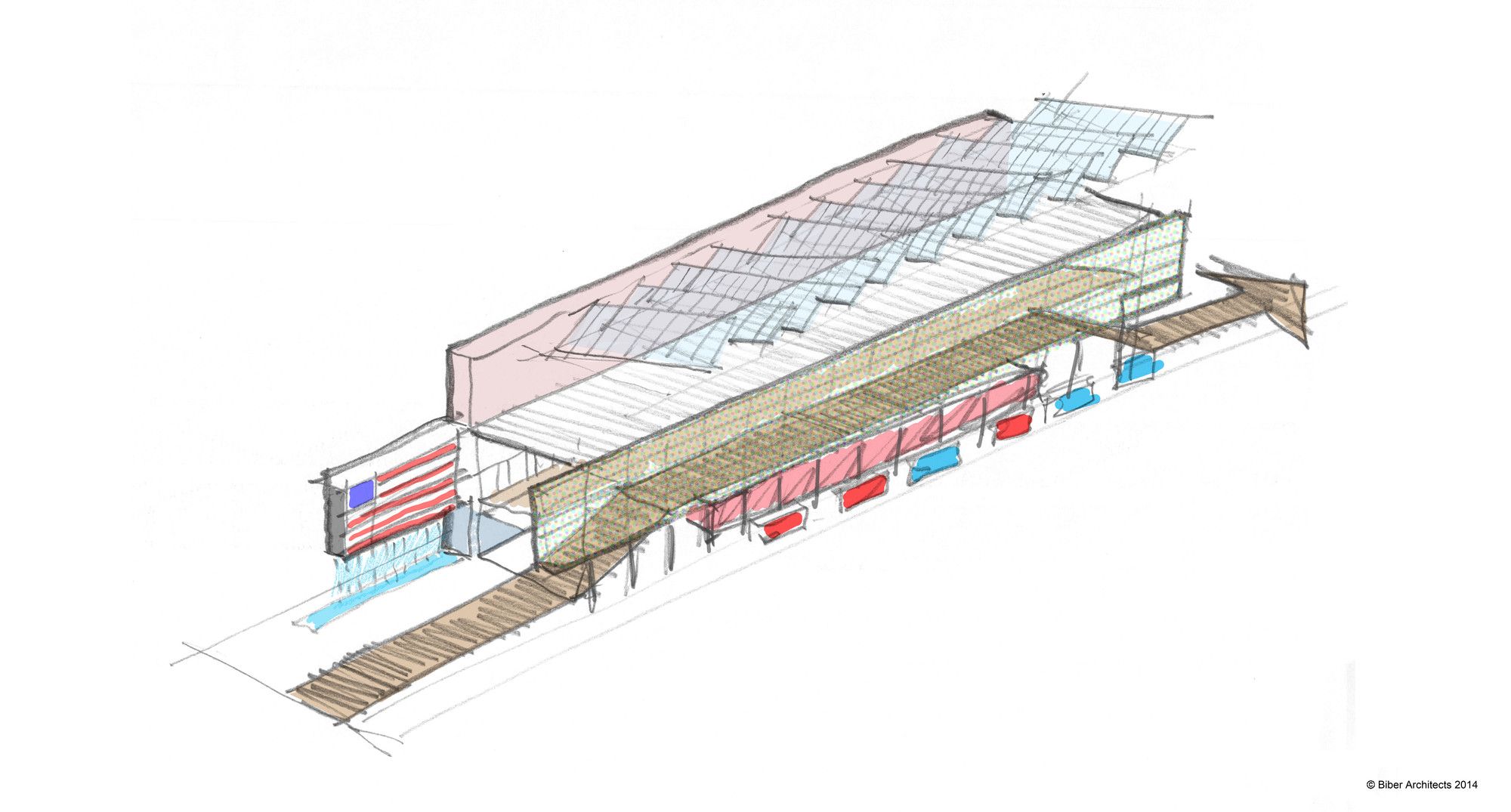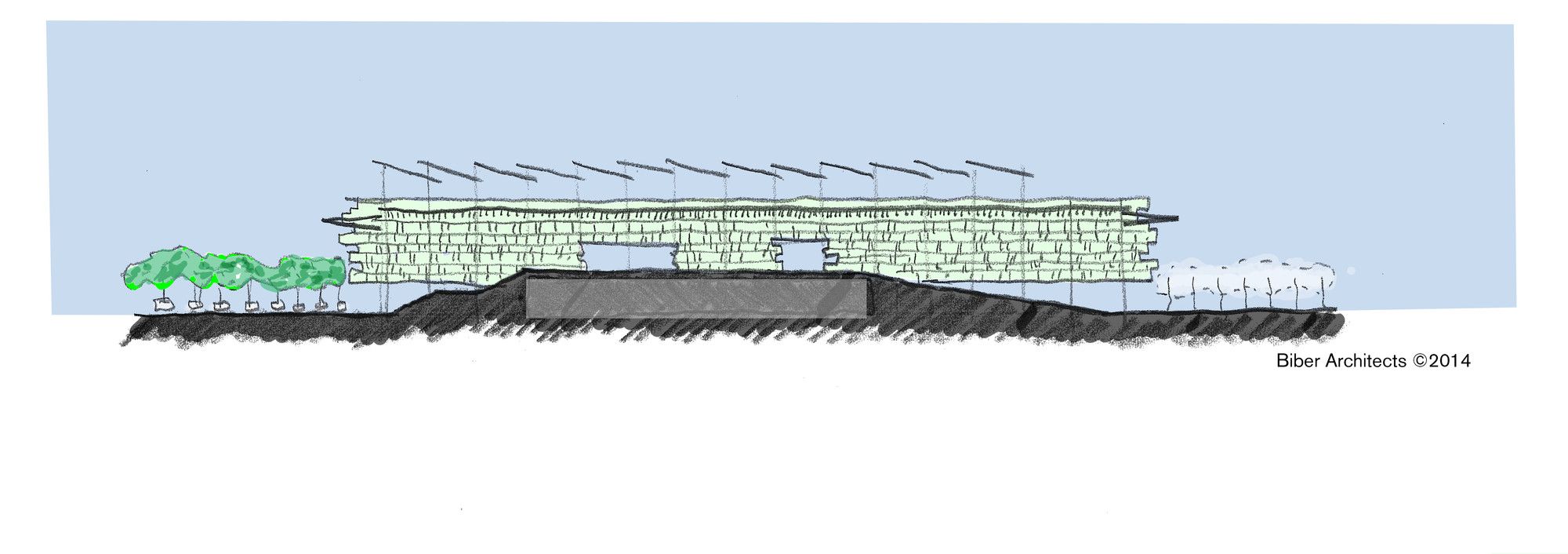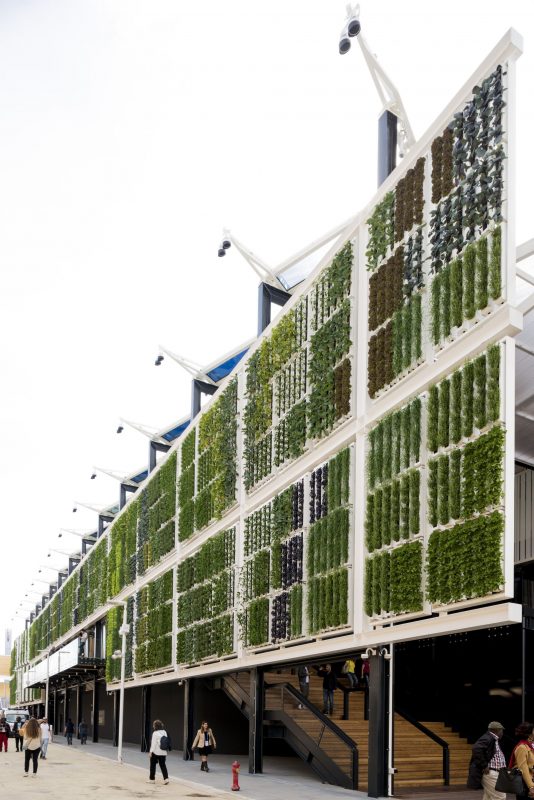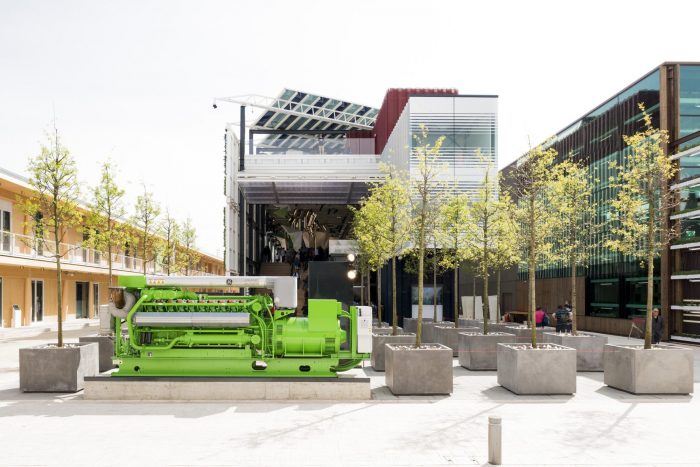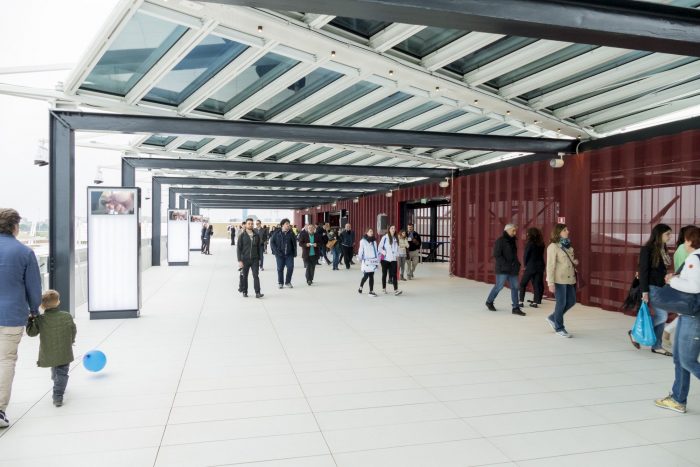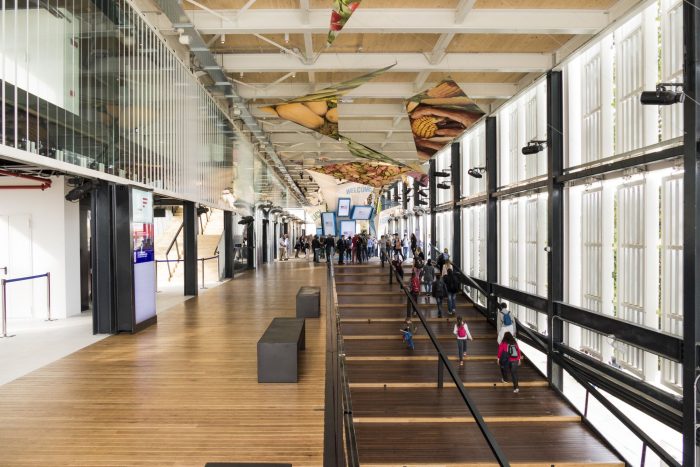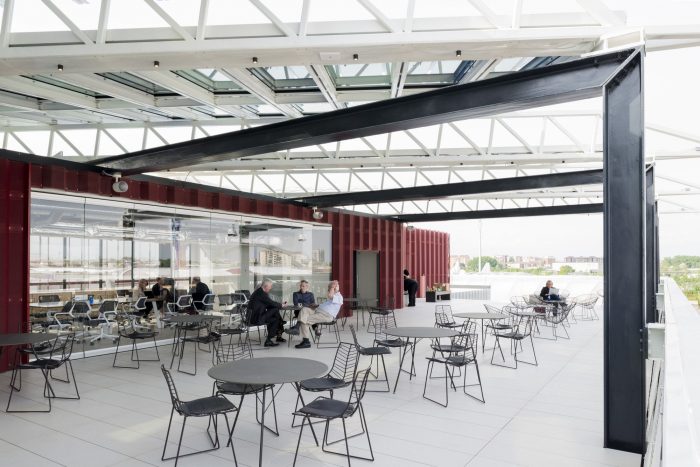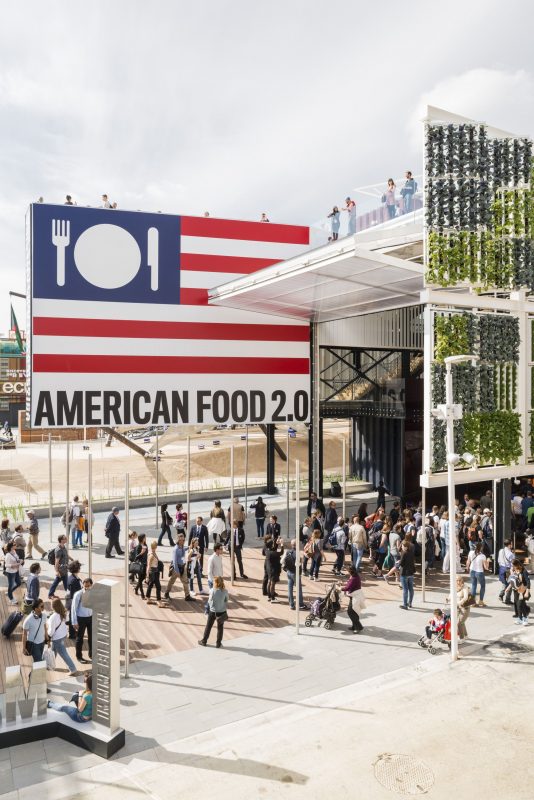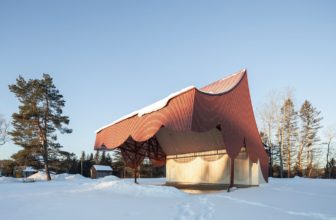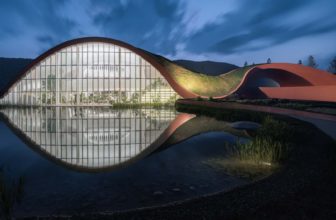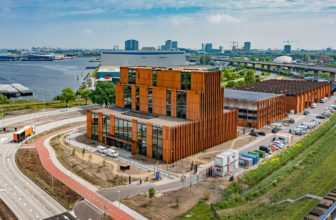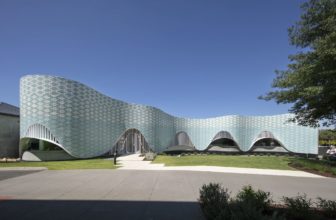Defining an entire nation in a single building, especially one as complex and contradictory as the US, is a daunting task. Expo Milano 2015 is themed “Feed the Planet, Energy for Life” – an entire Expo focused on the issues of global food security and the impacts of our personal food choices.
The USA Pavilion for Expo Milano showcases America’s unique role in the future of food and hosts a global conversation about the challenge of feeding more than 9 billion people by 2050. “American Food 2.0: United to Feed the Planet” tells America’s food story – one of innovation, diversity and entrepreneurship – through topics including food security and policy, international relations, science and technology, nutrition and health, and culinary culture.
The pavilion participates in the conversation by acting as a scaffolding for ideas, and by embracing and displaying some very American hybridization : analog and digital, natural and technological, innovative and recycled. On the extremely long and narrow site, defined by the unusually urbane master plan, the pavilion is bounded by an analog wall (containing elevators, escalators, stairs, mechanical shafts, etc.) ; a purely digital roof (glazed in SPD Smart Glass that instantly switches from clear to opaque to respond to environmental conditions); a green Vertical Farm (employing hydroponic towers in a motion driven array); and a promenade rising through the pavilion made from salvaged Coney Island boardwalk.
Unlike most pavilions historically, and recent US Pavilions in particular, American Food 2.0 is an invitation to enter a visible and transparent open public forum. The pavilion is characterized by openness, transparency, and accessibility. It is composed of sustainable design elements and with myriad references to American culture.
Rather than a forced march through a fixed exhibition (as in the last Expo) the pavilion has a variety of experiences; a self-guided and flexible space, as well as a traditional linear exhibition. The building is a ‘farm industrial’ inspired structure embracing both simple, industrial agricultural architecture and advanced technology in a very American amalgam of opposites.
Open for the six month Expo, the building will then be dismantled and will be reused as well as recycled, as required by the International Bureau of Expositions. It may be an oxymoron of sustainable design, but is a bold act of public diplomacy to be seen by an estimated 25 million people.
Project Info :
Architects : Biber Architects
Project Year : 2015
Project Area : 3900.0 sqm
Graphic Design : Pentagram
Engineering : ESA Engineering
Exhibit Designer : Thinc Design
Landscape Design : dlandstudio
Structures and Systems : SCE Project
Partner in Charge : James Biber FAIA
Photographs : Saverio Lombardi Vallauri
Lighting Design : Tillotson Design Associates
Architect of Record : GLA Genisu Loci Architettura S.r.l.
Project Location: Ingresso EXpo, Via Giorgio Stephenson, 107, 20157 Milano, Italy
Design Team : Daniel Marino, Steven Grootaert, Jackie Krasnokutskaya, Suzanne Holt, Emaan Farhoud, Suzanne Lettieri Joshua Jow, Federico Pellegrini, Rawan Muqaddas
